





Organizations representing the country’s independent automotive repairers, collision repair experts and leading automakers announced July 11 they inked a landmark agreement on automotive right to repair, but two other organizations objected, calling it a thinly veiled attempt to confuse lawmakers and drivers.
The Auto Care Association (ACA), an original signatory to the 2014 MOU, said it was not consulted about, was not a party to and does not support the new pact. ACA said ASA and SCRS, who did not sign or support the 2014 MOU, represent a small fraction of the independent repair market and do not speak for the automotive aftermarket.
REGIONAL NEWS
The commitment among the Automotive Service Association (ASA), the Society of Collision Repair Specialists (SCRS) and Alliance for Automotive Innovation (AAI) was meant to affirm a 2014 Memorandum of Understanding (MOU) on automotive right to repair, stating “independent repair facilities shall have access to the same diagnostic and repair information that auto manufacturers make available to authorized dealer networks.”
“The agreement between the AAI, ASA and SCRS is a thinly veiled response by the automotive OEMs to HR 906: the REPAIR Act,” ACA said. “While the agreement purports to be relevant, all it does is affirm the 2014 MOU rather than implement a meaningful solution to preserve the entire automotive aftermarket and the competition and consumer choice that it creates.”
The CAR Coalition also questioned the impetus behind the pact and reiterated its support for the SMART and REPAIR acts.
In a letter to Congress outlining the pact, ASA, SCRS and AAI wrote: “This commitment was created with our mutual and valued customers in mind: vehicle owners. It affirms that consumers deserve access to safe and proper repairs throughout a vehicle’s lifecycle [and] it is built to
l CONTINUED ON PAGE 29
Hunter Engineering is pleased to announce Lincoln Tech’s Denver campus will be the latest site to house a Hunter Training Center. Local students and repair shop technicians will be offered the opportunity to train directly on Hunter equipment through a wide range of available Hunter courses.
The new training center, Hunter’s 47th across the nation, will open Aug. 1.
Lincoln Educational Services Corp. is a leading provider of diversified career-oriented post-secondary education, offering recent high school graduates and working adults programs in automotive technology, health sciences, skilled trades, business and information technology,
REGIONAL NEWS
and hospitality services.
“This is such an exciting opportunity not only for our students, but for many of our employer partners in the Denver metro area,” said Scott Shaw, Lincoln Tech CEO. “It’s also an honor to partner with a company whose roots lie in service to our nation’s veterans. There is a common passion there, a commitment, that we feel truly binds our two organizations.”
Hunter’s vast training network provides hands-on and classroom instruction led by certified trainers both onsite and at regional training centers. One particular piece of Hunter equipment will be unique to Lincoln Tech: The campus will be the first school-based training center
l CONTINUED ON PAGE 18
The Maaco Euless team in Euless, TX, recently donated a surprise paint job to a local teen battling Friedreich’s ataxia, an inherited nerve disorder that has similar effects to ALS or muscular dystrophy, with a repainted Scooby Doo-themed van.

Weston Groff, a 17-year-old teen living in the Euless community, has been battling this disease his entire life. One of his biggest wishes in life has been to take a trip to see the Grand Canyon, and what better
l CONTINUED ON PAGE 10
Columnist Mike Anderson: Creating an Extraordinary Customer Experience Before, During and After Collision
Columnist Abby Andrews: How to Use ‘Blue Sky Thinking’ to Bring Innovative
Columnist Stacey Phillips: Solving the Tech Shortage: Toby Chess Helps Body Shop Owners Start Mentorship Programs
Columnist John Yoswick: PartsTrader Webinar Examines Trends in Collision Parts Delays, Pricing
MINIMIZE LOSS
Material Usage Rate
Labor
Waste Theft Warranty
Re-work Indifference
Our team and systems work to minimize each
MATERIALS
Hundreds of supplier relationships


TOOLS TECHNIQUE SPEED / QUALITY
OPTIMIZED LABOR / IMPROVED CYCLE TIMES
Careful inspection, monitoring, measurement and reporting
Industrial Finishes has experts on staff
Industrial Finishes provides training, education & SOPs

Abby Andrews How to Use ‘Blue Sky Thinking’ to Bring Innovative Ideas Down to Earth 28
On June 8, a deserving Scottsdale, AZ, resident was presented with a vehicle to provide her independence and the ability to work and take care of her family, thanks to the National Auto Body Council Recycled Rides® program along with car donor GEICO and Painter’s Collision Centers.

The recipient of the 2020 Kia Soul, Angelica Wells, was chosen by the Family Promise of Greater Phoenix. She became a mother when her sister passed away and she adopted her two children, ages 7 and 8. Then, she relied on her mother to care for the children while she worked. Sadly, her mother passed away three years ago.
Wells moved to Arizona for the support she felt she would find. After several months she found she didn’t have the help she needed with childcare. She lost her job and consequently housing. Family Promise welcomed them into their shelter, and the family successfully completed the program.
Family Promise reported they have been impressed with Wells’ perseverance under some very challenging circumstances.
Because her car was repossessed after losing her job, she was paying high car rental costs to transport her children to school and herself to work. A reliable vehicle will help her maintain the stability and security that she has worked so

Painter’s Collision Centers. “We believe in giving back, and when approached by GEICO and asked if we would be willing to volunteer our time, and vendor partnerships to get this vehicle back on the road we jumped on the opportunity.
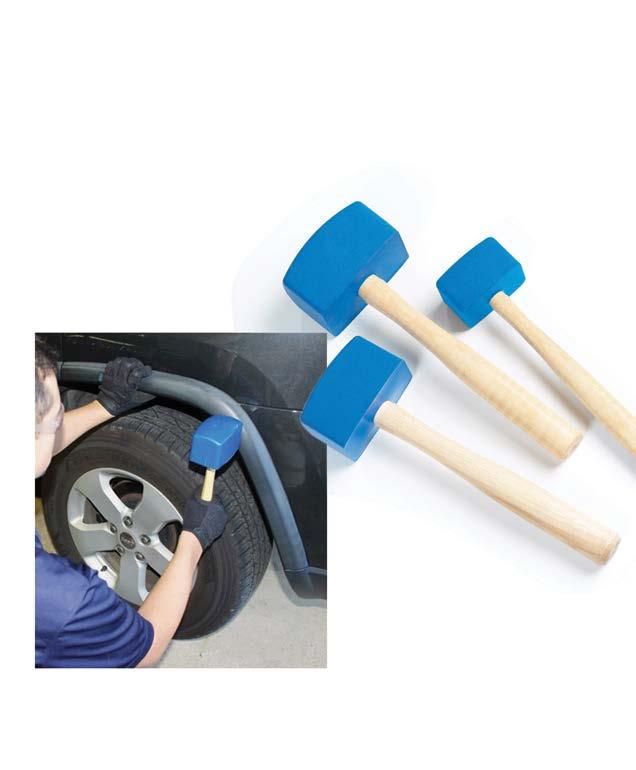
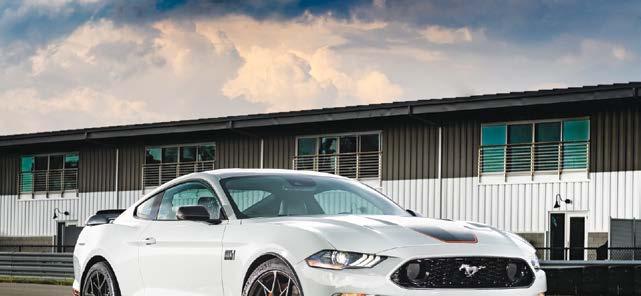
programs, Family Promise of Greater Phoenix.

“Just want to say thank you all again,” said Wells. ”We are so grateful for all that you have done for us. We really appreciate it.”

NABC Recycled Rides is a unique program in which businesses representing all facets of the collision repair industry team up to repair and donate vehicles to individuals and families in need of reliable transportation. Since the inception of the NABC Recycled Rides program in 2007, members of the NABC have donated more than 3,000 vehicles valued at some $42 million.
hard to create. Having this vehicle will mean she and her family will be relieved of an unsustainable financial burden and will allow them the opportunity to save for a more promising future.

“The team at Painter’s Collision Centers is committed to our community and the partners we work with,” said Jim Huard, owner,
We were thrilled with the recipient chosen by the NABC. She is very deserving and it was a true pleasure to gift this vehicle to her and her family. The family was so pleased with the 2020 Kia Soul.”
“The hardship of not having a vehicle in our climate, in such a large city is almost impossible,” said Doni Miller, director of graduate
GEICO donates vehicles to the NABC Recycled Rides program, designed to help individuals, families or organizations in need with the gift of transportation. In 2022, GEICO donated more than 200 vehicles to the program.
Additional partners in the NABC Recycled Rides presentation include 1-800 Charity Cars, Enterprise, Dent Wizard Smart Repairs, The Wheel King, East Valley Auto Glass, Elitek Vehicle Services and Big O Tires.

Source: NABC

5880LB/2667KG
TOAVOIDSERIOUSINJURYORDEATH:
•Donotleanagainstthedoor.
•Donotuseseatcoversthat Seeblocksideairbagdeployment. owner’smanualformoreinformation.
POURÉVITERDESBLESSURES
GRAVESOUMORTELLES: •Nevousappuyezpascontrelaporte.
•N’utilizezpasuncouvre-siège quipeutbloquerledéploiementdu Voircoussingonflablelatéral.lemanuelduconducteurpour deplusamplesrenseignements.
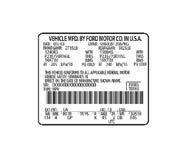
Conformstoregulations: 2015 Fuel: Gasoline
U.S.EPAclass/stds: LDV/TIER2

Californiaclass/stds: PC/ULEVqualified
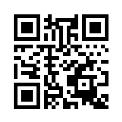
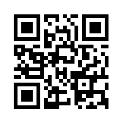
This is part one of a two-part series. Check out the September 2023 issue of Autobody News to read about more shops in the program.
Toby Chess recalls planning a collision repair training day for about 80 high school students in Hawthorne, CA, 25 years ago. Since then, he’s had a passion for training young people and bringing them into the collision industry.
OEM repair procedures and proper personal protective equipment. These include repair planning, corrosion protection, bumper repair, vehicle measuring and glue tab dent repair.
“We have to take steps to give back to the industry and address the technician shortage,” said Chess. “Otherwise, nothing will change.”
As a long-term instructor with I-CAR for more than 25 years, Chess reached out to the organization about the program. I-CAR is offering support to his endeavors and working with him to amplify his efforts.
common for body men to bring in relatives to the shop as helpers who eventually became technicians.
“Toby, having a good heart, suggested we hire some people, give them tools and train them,” recalled Nouri.

Nouri reached out to friends and relatives who knew of unemployed individuals and hired four as helpers to be mentored by his more experienced technicians.
“I gave each technician a helper and Toby gave them toolboxes and trained them,” said Nouri. “They are going to be body men within a year or two.”
Zamir has a close relationship with several local tech schools and is often asked to speak with students about the “real-world experience.”
“Because I invest so much in equipment and training and am personally knowledgeable in various aspects of the shop, I can take a student out of tech school and offer them a career,” he said. “This includes
About two years ago, he was visiting a body shop and a newer employee was asked by his supervisor to sweep floors and do menial tasks.
“I asked his supervisor why he didn’t buy him some tools so he could feel part of the team,” said Chess, who ultimately bought tools for the budding technician. “The expression on his face was unbelievable.”
Fast forward to the present and Chess said shops are in the same predicament as they were when it comes to hiring and retaining staff.
“We all need technicians,” said Chess. “We’ve been talking about that for years but what are shops doing about it?”
Chess stresses the importance of keeping young people engaged and setting a career path for them.
“It’s critical to find ways to motivate these young people and keep them engaged or they won’t stay,” said Chess, who embarked on a project to encourage independent shop owners to initiate mentorship programs.
Chess supplies a set of tools to the helper and asks shop owners to provide toolboxes. He also shares best practices documents he created that the mentor and mentee can follow to help standardize the repair and can be used in conjunction with
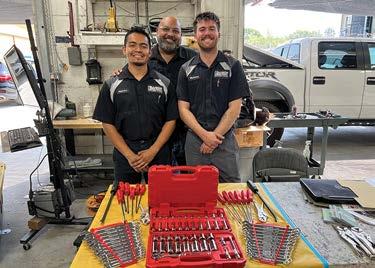

“I-CAR is proud to support the efforts of leaders in our industry, like Toby, who are making strides to foster a learning culture and growth mindset in our shops—particularly with new technicians,” said Dara Goroff, I-CAR’s vice president of planning and industry talent programming. “It’s an exciting time to be a professional in collision repair and we want to highlight the purpose new technicians find within it when they’re presented with opportunities that contribute to a complete, safe and quality repair for the safety of their customers.”
Six shops in Southern California shared information about the support Chess has provided with their mentorship programs, supplying tools to mentees and training. Here is what the first three shop owners had to say.
While working as a tow truck driver in the mid-1970s, Eddie Nouri admired how vehicles were repaired at the body shops he visited and eventually opened Anthony’s Body & Paint in Santa Monica, CA, in 1979. Since then, Nouri has purchased about 10 other shops, built them up and sold them.
Currently, he operates a facility in Inglewood in addition to his Santa Monica location. They have a total of about 50 employees and 10 OEM certifications.
As a result of the pandemic, Nouri found they were shorthanded.
He said 20 or 30 years ago, it was
He encourages other body shops to do the same and help develop the next generation of technicians.
Nouri has known Chess for many years and is appreciative of the training and assistance he has provided.
“I consider myself a successful and happy person and I owe Toby a lot of gratitude because he has taught me a lot,” said Nouri. “I noticed that every technician loves Toby and wants to improve themselves after working with him.”
ongoing training and immediate overthe-shoulder guidance while they’re doing the work.”
Zamir and Chess have been friends for many years. “He travels across the country to support shops that are willing to train their staff,” said Zamir. “He is a true friend of the industry, and like many true friends, he doesn’t seek nor get the appreciation he deserves.”
Scandinavian Coachcraft was established in 2001 by Ole Vandborg, who learned the trade in Europe as an apprentice and has lived in Los Angeles for 37 years. The collision repair facility focuses on quality repairs and has five structural certifications, Aston Martin, Lamborghini, McLaren, Mazda and Volvo.
To retain technicians and new talent, Vandborg recommends having upto-date equipment, and offering continual training and good pay.
Founded in 1989, Collision Consultants Auto Body & Paint Shop is owned by Sam Zamir and his partners. Over the years, the company has built a reputation as a high-end specialist, being among the first in Los Angeles to do aluminum repairs and work on electric vehicles (EVs) and new technology in cars. The business is certified by Maserati, MercedesBenz, Porsche and a few other manufacturers, and is I-CAR Gold Class.
“We take part in all of the I-CAR training available and our technicians are aluminum- and steel-certified welders,” said Vandborg. “The paint crew is certified as well and we send a couple of our employees to Europe every year for training.”
Over the years, Chess has done a lot of training at the facility, which has 30 employees. “They all know him and what he expects from them,” said Vandborg. “He has done a fabulous job moving an average tech to a super tech… he is a saint for all his dedication to the collision industry.”
“It’s critical to find ways to motivate these young people and keep them engaged or they won’t stay.”
TOBY CHESS
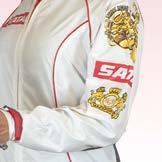

“I am so excited that SATA by Dan-Am has teamed with me to introduce the very first paint suit for women. The Girls Behind The Gun paint suit is made to fit the ladies who work hard in this industry...No more tape ladies” ~ Connie Manjavinos
Protective hood
Full poly-cotton back for increased breathability

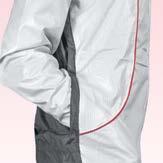






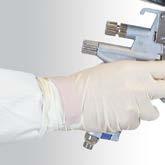
Machine washable. Made from 100% polyester calendered materials with antistatic built-in carbon fiber threads to dissipate electronic charges. Breathable full poly-cotton back.
INNOVATIVE PATENTED Drop seat for complete ease of movement
Helps prevent ripping at crotch
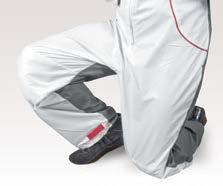
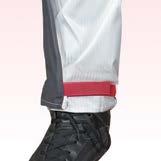









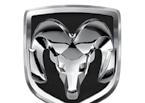

Scoggin-Dickey Chevrolet Buick


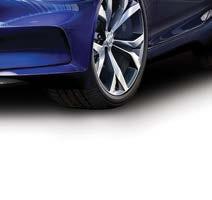
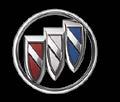

5901 Spur 327 › Lubbock, TX 79424
Mon-Fri: 7:30 - 6:30 • Sat: 8:30 - 12:30
Choose
Parts Toll Free: 800-888-4251
Parts Local: 806-798-4013
Competitive Wholesale Prices
Large Inventory of Subaru OEM Parts








Scoggin-Dickey ISUZU
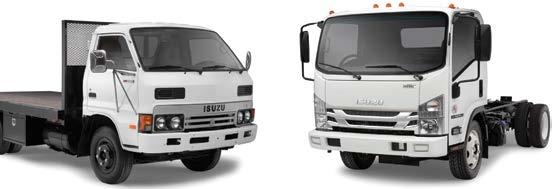
5901 Spur 327 › Lubbock, TX 79424
Mon-Fri: 7:30 - 6:30 • Sat: 8:30 - 12:30
Parts Toll Free: 800-888-4251
Parts Local: 806-798-4013
Scoggin-Dickey Subaru
5901 Spur 327 › Lubbock, TX 79424

Mon-Fri: 7:30 - 6:30 • Sat: 8:30 - 12:30
Parts Toll Free: 800-888-4251

Parts Local: 806-798-4013



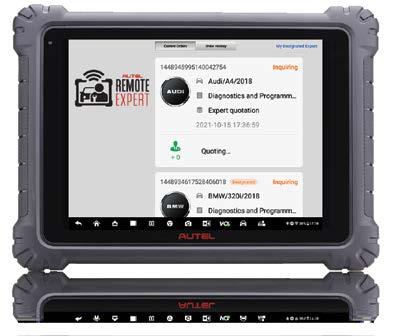
General Motors Co. and Element 25 Limited announced June 26 an agreement for Element 25 to supply up to 32,500 metric tons of manganese sulfate annually to support the annual production of more than 1 million GM EVs in North America.
Under the agreement, GM will provide Element 25 with an $85 million loan to partially fund the construction of a new facility in the state of Louisiana for production of battery-grade manganese sulfate—a key component in lithium-ion battery cathodes— starting in 2025. Element 25 will produce manganese sulfate at the facility by processing manganese concentrate from its mining operations in Australia. It is expected to be the first facility of its kind in the U.S.
“GM is scaling EV production in North America well past 1 million units annually and our direct investments in battery raw materials, processing and components for EVs are providing certainty of supply, favorable
commercial terms and thousands of new jobs, especially in the U.S., Canada and free trade agreement countries like Australia,” said Doug Parks, GM executive vice president, Global Product Development, Purchasing and Supply Chain. “The facility E25 will build in Louisiana is significant because it’s expected be the first plant in the United States to produce battery-grade manganese sulfate, a key component of cathode active material which helps improve EV battery cell cost.”
Element 25 Managing Director Justin Brown said: “E25 is working to be a leading source of high quality, vertically integrated, traceable and ESG-compliant battery material to the global electric vehicle industry and GM’s support does more than accelerate our expansion in the United States. Together, we are creating a resilient and sustainable North American supply chain that will help introduce millions of customers to the performance and environmental benefits of EVs.”
Element 25 expects to invest approximately $290 million to build
a 230,000-square-foot facility. Site preparation is planned to begin in the third quarter of 2023 and the plant is scheduled to open in 2025. The facility is projected to create around 200 permanent jobs when it is fully operational.
GM continues to strengthen its domestic supply base for EV production. In addition to manganese sulfate, GM has announced direct investments in lithium, nickel and other commodities, as well as cathode active material (CAM) and CAM precursor. GM and its joint venture partners are installing 160GWh of battery cell manufacturing capacity in the U.S., and its suppliers are onshoring production of permanent magnets and other EV components to North America. To date, these initiatives are creating thousands of jobs in states and provinces including California, Louisiana, Nevada, Texas, Ohio, Michigan, Tennessee, Ontario and Quebec.
Source: GM
way than to do so in a Scooby Doo Mystery Machine.
“When the opportunity came to us to help make Weston’s trip even more special, we were ecstatic,” said Steven Cidlik, owner of Maaco Euless. “We were honored to work on this project and aid in giving such a deserving child a special memory.”
Groff’s family and friends have been raising money to help fund the trip for Groff and his family. Now, the family has a vehicle to comfortably travel the more than 1,000-mile trek from Euless to the Grand Canyon.
“This project was special because it filled my team and I with so much pride,” said Cidlik. “Seeing the way the group jumped right in to tackle this project was incredible. I look forward to continuing our efforts in giving back to our deserving community!”
For more information about Maaco, visit Maaco.com.
Source: Maaco

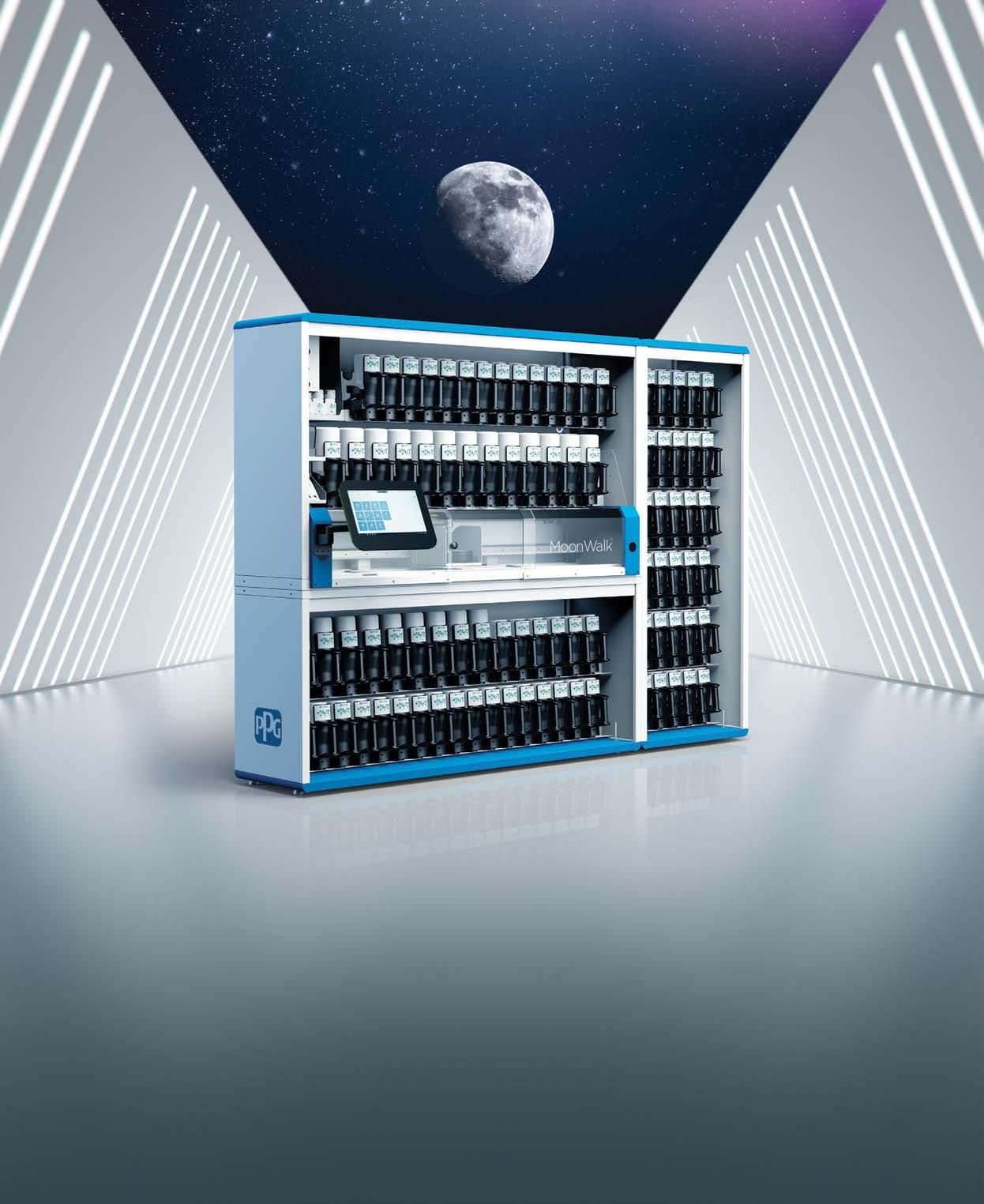




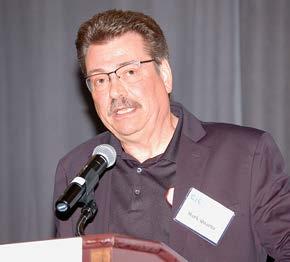 By John Yoswick Autobody News
By John Yoswick Autobody News
Back in 2019, when Jeff Peevy was chairman of the Collision Industry Conference (CIC), he started placing an empty chair on the stage as a reminder to attendees of an important industry constituent not generally represented at the meetings: the consumer.
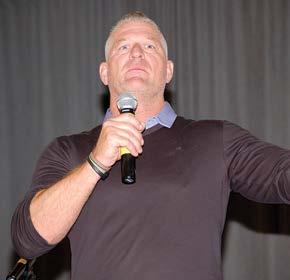
“Those families who ride in the cars that our industry repairs should be at the forefront of our thoughts,” Peevy said at one CIC meeting that year.
Now the vice president of technical products, programs and services for I-CAR, Peevy said the lack of interest he sees in getting technicians trained to work on electric vehicles (EVs) has him concerned for more than just consumers.
“I see our industry standing on the tracks looking at a freight train coming full speed at us, and we’re just staring at the light,” Peevy said
reason that even the country’s largest multi-shop operation is taking a conservative approach to gearing up for EV repair. Jeff Brewer, director of EV strategies and OEM certifications for Caliber Collision, said as of this spring, just 21 of the company’s more than 1,700 locations were specifically trained and equipped for EV repair.
“Of those, there’s a few that that’s all they work on,” Brewer said at CIC. “We’re still drinking from the fire hose. We started two years ago and there’s still much we don’t know. It’s really evolving. We have a lot of strategic partners—fleet accounts, insurance accounts or OEM accounts—that would like to see us tool up quicker. We just can’t. We’re taking a very conservative slow approach to it, first and foremost focused on employee safety.”
Space is another consideration, he said. Go to your shop’s back lot, he suggested, and map out the 50 feet of space you’ll need around an EV towed in with significant damage that needs to be quarantined.
“But at the end of the day, it is manageable, it is doable,” Brewer said. “And we don’t really have a choice. I will tell you, when you get to the point—and I imagine a lot of you are already there—that you hang a sign up that says you’re EVready, get ready, because you will be swamped. It’s less than 20% of the industry that’s really proactively going after this, creating the solutions.”
echoed by another speaker at CIC, Mark Quarto of Quarto Technical Services. Earlier in his career, Quarto spent 28 years with General Motors developing propulsion and battery pack systems. He said particularly
a scope can be used to detect lithium-ion battery off-gassing that cannot be seen with the naked eye in addition to ongoing temperature scans to determine if there is an upward trend. A four-gas meter should also be used within 4 feet of the EV to detect carbon monoxide and hydrogen.
Zartman said fire codes “are never going to catch up with how fast this industry is evolving,” so shops may not be able to get a lot of helpful guidance from fire marshals about how to set up space for EV repair or storage. Insurance underwriters may be a better resource, he suggested.
from the floor of CIC this spring. “When we look at the number of those in the industry—regardless of whether it’s repairers or insurers— who have expressed any interest in educating themselves on EVs, it’s shameful, to be honest with you. I think we’re going to need to put another chair up there [on the CIC stage] to represent those who are involved in the repair of electric vehicles, because I’m not sure the technicians and those laying hands on the vehicles have any idea of the danger they are being put in.
“My question is: How many shops are going to turn an EV away when they see it as a job they can do? Yet they may have no idea what they are getting into. I think as an industry we need to search our soul, and become honest about getting educated.”
Employee safety was cited as a key
He said with past vehicle technologies, the industry had the luxury of a slow roll-out, a tendency to “fake it until you make it.” He pointed to vehicle scanning as an example of a technology the industry was able to adapt to over time. EV repair is not like that, he said.
“This is not a technology that we can slow roll,” he said. “Our company has decided this is not a situation where we can just teach the average collision repair technician another trick.”
Like it or not, he said, EV repair requires a collision repair business “to very quickly be in the mechanical business.” He said this is particularly true for those working with new EV entrant automakers, such as Rivian and Lucid, which require certified body shops to be “full service” in terms of both body and mechanical repair.
“Eighty percent of the industry still doesn’t get that,” Brewer said.
That need for expansion beyond traditional body and paint work was
with electric vehicles, collision repair businesses will need a thorough intake system that includes looking at more than basic scans and diagnostic trouble codes.
“That data is good, but there are some situations which there won’t be a trouble code but there’s going to be something that’s nearing failure,” Quarto said at CIC. “Sometimes knitting some of the data together helps someone to know how close something is to a failure. So knowing what data to look at, how
“I would encourage you to look at the spaces where you are operating on the vehicles and have really strong protocols for rapid removal of vehicles,” he said. “If a vehicle starts going through a thermal runaway, have a practiced, planned process in place about how you protect your personnel, and how to remove the fuel source from the building.”
He also recommended making wherever EV batteries are stored “very fire resistant” and isolated from the rest of a shop’s structures.
“Because the reality of every sprinkler system on the planet is it’s going to be designed to protect the building but it is not going to put out a battery fire if you have one and have multiple battery packs in a space,” Zartman said. “You will lose all the contents of that room.”
to look at it, and how to knit some of that together can be helpful. I know in the collision industry, the high voltage electrical stuff especially has not been in the DNA. But it’s going to have to be. You’re going to have to evolve into it.”
Dalan Zartman of the Energy Security Agency said a single thermal image scan of an EV is often insufficient to determine if the battery pack is experiencing thermal runaway. There is often too much between the outer layer of the battery pack enclosure being scanned and the actual battery cells, he said.
A thermal imaging camera with
As at every CIC, the agenda included a variety of topics. During one panel discussion for example, a shop owner discussed seeing differences in what some insurance companies will pay for versus other companies. Ohio attorney Erica Eversman offered a caution about billing consistently no matter who is paying for the vehicle repairs.
“If you have a good company, so to speak, that pays, you want to keep that good company paying well,” Eversman said. “They need to see that you are always demanding the same thing no matter who the carrier is. Because they’re going to be looking at documents in subrogation,” and you don’t want them to see, “Oh, well, you charged us for this but you didn’t charge that other insurance carrier for that.”
Apply the same business and billing practices across all customers, irrespective of whether the job is self-paid or paid for by any insurer, Eversman suggested.
“My question is: How many shops are going to turn an EV away when they see it as a job they can do? Yet they may have no idea what they are getting into.”
JEFF PEEVY VICE PRESIDENT OF TECHNICAL PRODUCTS, PROGRAMS AND SERVICES FOR I-CAR
EXPERIENCE. EXCELLENCE.
For more than 25 years Axalta has sponsored and facilitated Business Councils to help our customers elevate their business performance by creating a network of industry peers and offer the opportunity to learn, share and hear from industry leaders. Axalta leads the way in giving you the tools and information you need to be successful.
• Share best practices within the collision repair industry
• Opportunity to work “on your business” versus “in your business.”
• Network with other shops for assistance with your challenges
• Access to the latest industry tools and resources
• Greater industry networking opportunities
AREAS OF FOCUS
• Industry Trends
• Peer-to-Peer Networking
• Financial Benchmarking
• Marketing
• Operational Best Practices
Meetings will be held semi-annually (April and October) on a Thursday and Friday and will consist of individual group breakout sessions along with general sessions. Individual sessions will be led by key Axalta Employees and will provide content tailored around the group’s business needs. There will also be industry specific walk around presenters. General Sessions allow for networking opportunities and will include a National Speaker presentation.
If you are interested in joining the Axalta Business Councils, please reach out to your Strategic Account Manager or contact namarketing@axalta.com and request an application today!
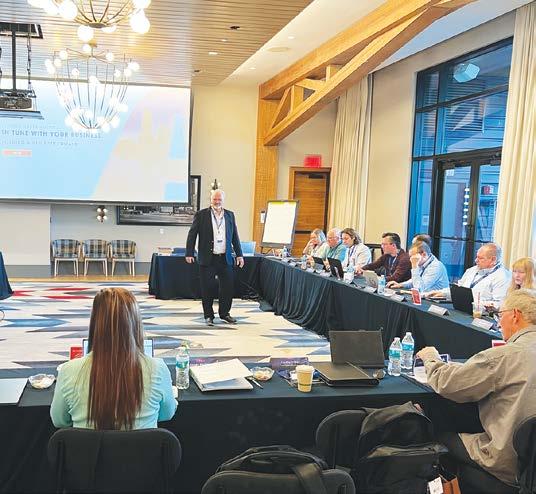

AkzoNobel is using advanced technologies to create step-change improvements in its North America industrial operations with the addition of a pilot manufacturing plant in Huron, OH, and a new regional research and development center in High Point, NC. The company is shaping the future through advanced technologies and delivering innovated solutions to customers. Huron’s new pilot plant is one in a network of pilot plants globally and supports AkzoNobel’s Packaging, Marine and Automotive businesses. The state of Ohio serves as AkzoNobel’s largest footprint in North America, with locations in Huron, Strongsville, Springfield and Columbus. The company’s community of North America R&D Centers supporting the Performance Coatings businesses includes—in addition to High Point— laboratories in Troy, MI, Strongsville, OH, Houston, TX, Flying Hills, PA, and Lancaster, SC. AkzoNobel’s

ProColor Collision Cypress is the latest to join ProColor Collision’s growing family of advanced collision repair facilities in the U.S. The new location is operated by Jack Pilavian, who has spent more than 26 years in the collision repair industry.
and highly skilled technicians are dedicated to handling all types of damage quickly and efficiently.

“We are excited to expand our operations and provide our expertise in high-quality auto body repair services to the Houston metro area,” Pilavian said. “Our ProColor Collision location is fully equipped to provide exceptional customer service and deliver precision and quality in every repair.”
repair facilities,” said Javier Vargas, ProColor Collision’s director of operations. “We are confident that Jack and his team will uphold our high standards of quality and customer service and provide exceptional auto body repair services to private and commercial customers throughout the Houston metro area.”
Located at 13800 Cypress North Houston Road, ProColor Collision of-the-art facilities and the latest technology to provide customers with the highest level of precision and quality in collision repair services. The team of attentive customer service representatives

As an established industry player, ProColor Collision Cypress has extensive experience working with a variety of insurance companies, making the claims process seamless for customers. Their commitment to exceptional customer service ensures that customers receive hassle-free and professional service every time.
“As ProColor Collision continues to expand, we are proud to welcome ProColor Collision Cypress to our family of accomplished collision
ProColor Collision Cypress is committed to providing exceptional customer service and high-quality auto body repair services to the Houston metro area. For more information about ProColor Collision Cypress, visit www.procolor.com/en-us/shop/ cypress.
Source: ProColor Collision

Professionally Trained Toyota Wholesale Parts Specialists on Staff












Competitive Discounts and Pricing on All our Genuine Toyota Parts 3 Trucks for Fast, Daily Deliveries throughout Utah
Inventory Updated Daily Brand New Cutting Edge Parts Department
ULTRA FLEXIBLE
Available in 3”, 5”, 6” Discs & Sheets
K-240 to K-1500
FLEXIBLE BONDING results in Extremely Shallow Scratches
ULTRASHARP ABRASIVES results in Faster Cutting

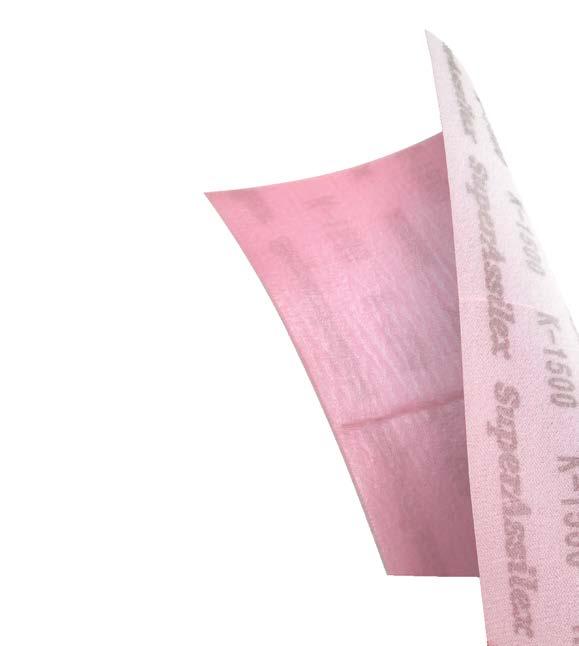
ANTI-CLOGGING AGENT results in a Total DRY Application

IT’S LIKE YOUR
IT’S LIKE YOUR
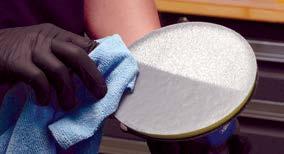
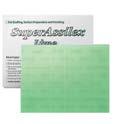
FAST, UNIFORM COVERAGE

Super Buflex is a revolutionary polish sanding system that works completely dry and delivers a more uniform finish while cutting faster. Leave the prep and mess of compound buffing behind and... reduce your buffing times by 50% or more!
ANTI-CLOGGING TECH
Available in 3”, 5”, 6” Discs & Sheets
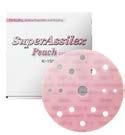
K-2000 to K-3000
TOLECUT Touch-Up System utilizes many of the same technologies to quickly eliminate nibs and runs after paint.

K-800 to K-3000
Super Buflex
EXTREMELY UNIFORM
CONVENTIONAL

South Hall Upper
Booth 33131
The original award-winning flexible sheet & disc sanding system that cuts fast while delivering a shallow and uniform finish. Perfect for scuffing, blending, topcoat sanding and more... By

Super Buflex Interface Pads VisitEagle@SEMA2023toexperienceforyourself
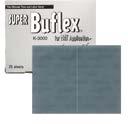

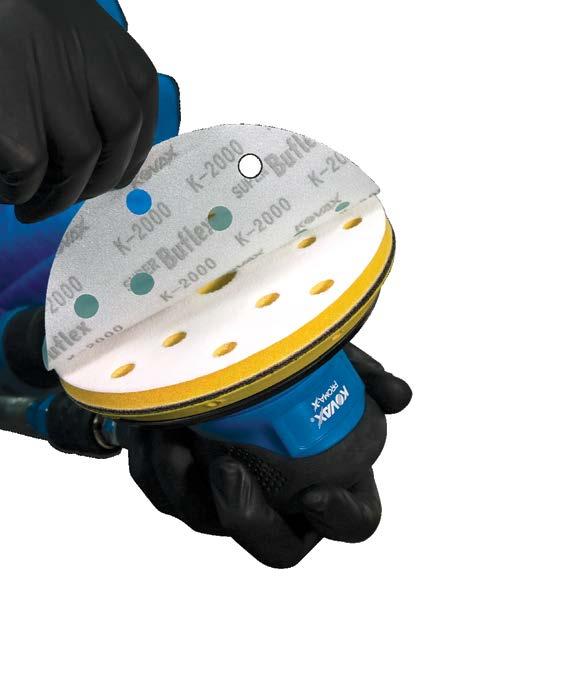
SCAN TO LEARN MORE
www.EagleAbrasives.com

A tour of the I-CAR Chicago Technical Center, insight from industry experts and networking with body shops and vendors were all part of the two-day 1Collision Summit, June 8-9 in Chicago, IL. The 58 attendees included 1Collision location owners and managers, sponsoring vendor partners, and 1Collision staff from the U.S. and Canada.
“1Collision conferences have always been very well received by the 1Collision location owners,” said Jim Keller, president and COO of 1Collision. “During the pandemic, we were only able to connect virtually with the shops and vendor partners as a group. We are grateful for the partners and speakers that supported the event with their very informative and relevant presentations.”
On day one of the event, there was a behind-the-scenes tour of the I-CAR Chicago Technical Center, which opened nearly a year ago. Attendees had the opportunity to see the latest collision repair technologies and education.
“The Day at I-CAR event was a dynamic and valuable experience for all in attendance,” said Keller. “Special thanks to Bud Center, Lisa Ferguson and the entire I-CAR and Chicago Technical Center leadership and staff for a memorable experience.”
“We’re proud to aid 1Collision in their collective objective. The Appleton and Chicago Technical Centers are investments in our industry’s technical infrastructure,” said Associate Vice President of Collision Repair Terry Ticel. “With advanced technology impacting all corners of the industry, I-CAR’s role is to support every collision repair professional so that they’re armed with the resources, knowledge and skills to survive and thrive the Technical Tsunami™.”
Following a technical presentation from Center, I-CAR’s director of technical products and curriculum development, Brandon Eckenrode, executive director of the Collision Repair Education Foundation (CREF), discussed CREF’s efforts to support collision school programs and showcased how businesses can get involved with local schools.
Ideas included volunteering on advisory boards, encouraging students, schools and instructors to take advantage of CREF scholarships and tool grants and sponsoring Cintas uniforms for students. He also urged shops to donate parts to schools through CREF, participate in
career fairs, present to schools and host field trips.
“Collision industry businesses engaging with their local schools, students and instructors is crucial to help ensure these classrooms are full but also are graduating properly trained entry-level staff for industry employment,” said Eckenrode.

Hopkins, MN, and Collision Center 1 in Golden Valley and Prior Lake, MN, received the Growth Award.
The Community Involvement award was given to Denisse Barragan, J & R Auto Body & Paint in California, and Steve Fishe from Plan B Auto Body received an award for Most Improved Shop.
MSOs increase gross profit on parts and improve the parts procurement process. Adler shared tips with conference attendees on how to increase gross profit with the parts procurement process. He also discussed the results from 1Collision’s pilot program and how locations have improved their bottom-line.
Bob Stansfield, senior manager, field operations, Collision Repair Network (CRN) for OEConnection (OEC), discussed the importance of ensuring quality and safety and the significance of OEM certification in the collision repair industry.
“It indicates that a repair facility meets certain standards and has the necessary equipment, tools and training to repair vehicles properly,” he noted.
Greg Peeters, CEO of Car ADAS Solutions, and Frank Terlep, vice president of collision and ADAS services at Opus IVS, then shared information about setting up and operating calibration centers.
Peeters talked about overcoming the hurdles of building a thriving ADAS calibration business. “With new vehicles now required to have a calibration post-collision repair, is it critical for collision repair facilities across the country to decide how they will meet this increasing demand,” said Peeters. During his presentation, Peeters addressed the current and future need to conduct ADAS calibrations and shared the requirements to set up an OEMcentric calibration center.
Terlep discussed what Opus IVS is doing to enable ADAS service, calibration and validation businesses to open, operate and succeed.
“Today, no company is able to provide an existing or future ADAS service, calibration and validation business a complete diagnostic tool, software and mobile app solution to properly identify, diagnose, calibrate, validate, document, manage and invoice for ADAS services, calibrations and validations,” said Terlep, who helped shops understand what will be required in the future.
During that evening’s dinner, 1Collision presented four awards to network body shop owners/managers.
Raffi Avetyan and Ellie Adri from All Magic Paint & Body in California were named Promoters of the Year for their help with recruiting new locations. Jerald Stiele and Jake Moser from Hopkins Auto Body 1 in
Keynote speaker Caleb Spitler, founder of Restio, then shared insight on avoiding burnout and the science of having more energy.
“Everyone wants to increase productivity, have lots of energy, feel good and take their organization to new heights, but last year the No. 1 reason people quit their jobs was due to burnout,” Spitler noted. “If we expect a high level of output from ourselves and our teams, we must become experts at restoring our physical and emotional well-being.”
The following day, 1Collision strategic partners presented on topical industry issues. Enterprise representatives Tristina Egloff, business solutions manager in the Enterprise Replacement & Leisure Division, and Andi Dachel, director of sales and business development at Entegral, were also available to answer questions about Entegral services.
Dan Risley, vice president of quality repair and market development for CCC Intelligent Solutions, talked about the future of CCC and technology.
“As Advanced Driver Assistance Systems (ADAS) continue to evolve and become more commonplace, industry trends are materializing surrounding scanning and calibrations,” said Risley.
Risley talked about the root causes of these emerging behaviors, how they can affect business, and solutions to help shops owners and manager better manage their collision repair facilities.
As the national account executive at PartsTrader, Mark Adler has been working at the company for 10 years, focused on helping shops/
OEC Director of Collision Sales Nicky Woerner provided an overview of current and future trends, including the inefficiencies and confusion they create for repairers. Woerner educated shops on what it takes to get to a predictable outcome and how OEC is committed to helping solve the complexity of repairs.
Keynote speaker Mike Jones, founder and president of Discover Leadership Training, finished the event with messages centered around leadership.
Jones encouraged attendees to get out of their comfort zone yet realize that failure must be an option. “The person who truly perseveres is the one who got up, dusted himself off and got into the game and went for it again,” he said.
“Meeting everyone at the summit, along with all the information, speakers and I-CAR tour, was very worthwhile,” said Greg Anderson from Crossroads Collision in Salina, KS.
“My team and I walked away with a new, invigorating drive to be the best we can be at what we do,” added Ernie De Loera from Collision Service Center in Schaumburg, IL.
Moser, who received the Growth Award, said going to the I-CAR facility was “awesome.”
“We were able to see what they are up to and learn about some of the new products they are working on,” he shared. “It was great to see that they were doing testing on aftermarket scanners to see if they could pass OEM standards, which would help the body shops a ton.”
Moser said he was able to learn from all the presenters who spoke. “Best of all, it was about the people meeting one another and learning from each other,” he said.
CARSTAR is a collision repair network made up of independent owners focused on delivering the highest quality repairs. By joining forces with over 700 other stores across North America, you will be able to leverage a larger scale of support to overcome any obstacle.
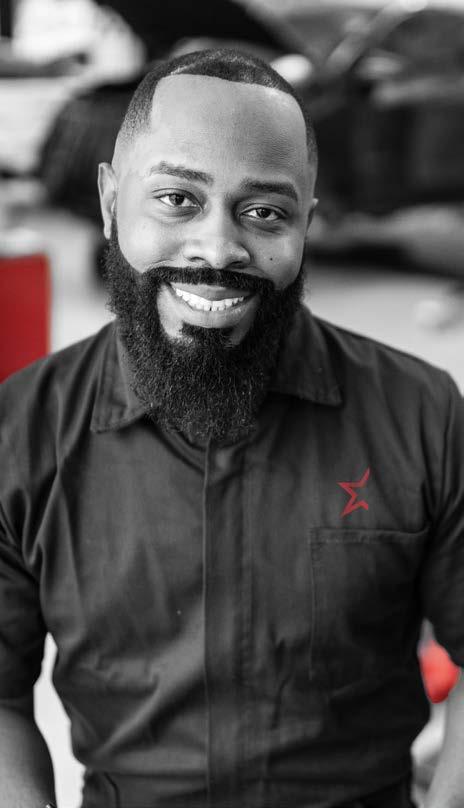
in the country to house Hunter’s 35,000-pound, four-post heavy-duty lift.

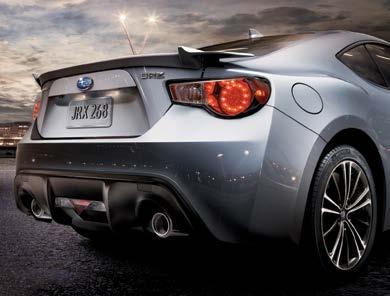

Also onsite will be Hunter’s
The course covers proper procedures for calibrating forwardfacing ADAS systems such as lane departure warning systems and adaptive cruise control systems, as well as procedures for blind spot monitor, surround view and rearview camera systems, among others.
“We’re thrilled to be able to work with Lincoln Tech to bring education and state-of-the-art equipment to technicians for this ever-changing industry,” said Tom Settle, Hunter director of training.
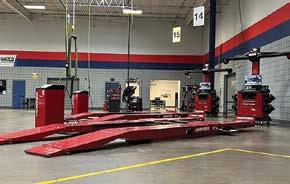

A Maaco shop in Plano, TX, recently hosted a communityfocused event June 10. The shop, Maaco Plano, is located at 1205 Summit Avenue, Plano, TX 75074.
aren’t just about generating business. I believe it’s important to show our community that we care for them, the way they care for us.”
ADASLink® diagnostic scan tool and DAS 3000 for hands-on education on ADAS calibrations. Hunter’s twoday ADAS course, Introduction to Advanced Driver Assist Systems, has proven popular as the industry gears up for increasing ADAS work.
Graduates from all Hunter Training Centers will be Hunter-certified and eligible to pursue career opportunities where Hunter-specific skills are needed, including thousands of private shops, franchised service centers and fleet service facilities nationwide.
For more information, visit www. hunter.com/training/availableclasses.
Source: Hunter Engineering
The event welcomed members of the local community to the facility and featured a car show intended to drive awareness of the shop’s location and wide array of services. The team was able to showcase their facility and drive production-friendly work into the shop, all while providing customers an opportunity to mingle and enjoy freshly cooked burgers and hot dogs provided by the Maaco Plano team.
The event was orchestrated by Chris Sherman, general manager of Maaco Plano. Maaco Plano is owned by Helmuth Mayer, who collectively owns seven shops in the Dallas area.
“I am always looking for ways to engage with the community and to show them the upside of uhohs,” said Sherman. “These events
With a turnout of 80 attendees and 20 cars shown, the event was a success. The modern and vintage cars on display were provided by members of the community.
This event served as the latest in a series of community initiatives and outings hosted by Maaco Plano. Most recently, the shop served as the host for a NABC Recycled Rides presentation where a veteran was gifted a free vehicle she can use for reliable transportation to finish her undergraduate degree.
For more information, visit www.Maaco.com.
Source: Maaco
Drivers hitting the road for the Fourth of July holiday will find the gift of lower gas prices across most of the country. AAA forecasts more than 50 million people will celebrate the nation’s birthday by traveling, with a record 43.2 million going by car.
The national average for a gallon of gas fell four cents since June 22 to $3.54 as of June 29.
“Gas prices are $1.30 per gallon less this year than last, but they are still high compared to historical averages,” said Andrew Gross, AAA spokesperson. “The previous record average high price for gas on July 4 was $4.10 in 2008, while the low was $1.39 in 2001. Yet despite currently elevated prices, drivers are not cutting back on travel this summer.”
According to new data from the Energy Information Administration (EIA), gas demand decreased slightly from 9.38 to 9.31 million b/d over the same
week. Meanwhile, total domestic gasoline stocks increased by 600,000 bbl to 220 million bbl. Lower gas demand amid increasing supply has helped to limit pump price increases. If demand remains low, pump prices will likely continue to decline through next week.
The June 29 national average of $3.54 is four cents less than a month ago but $1.32 less than a year ago.
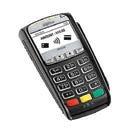

Since June 22, these 10 states have seen the largest decreases in their averages: in their averages: Arizona (-16 cents), Ohio (-11 cents), Indiana (-11 cents), Wisconsin (-11 cents), Illinois (-9 cents), Kentucky (-6 cents), Nevada (-6 cents), Georgia (-6 cents), Utah (-6 cents) and Florida (-5 cents).
The nation’s top 10 least expensive markets: Mississippi ($2.97), Louisiana ($3.08), Alabama ($3.10), Tennessee ($3.10), Arkansas ($3.11), South Carolina ($3.17), Texas ($3.18), Oklahoma ($3.22), Georgia ($3.23) and North Carolina ($3.25).
Source: AAA
A federal court on June 16 dismissed Tesla’s lawsuit against the State of Louisiana, aimed at enabling direct sales of vehicles.
Tesla has operated with a direct-to-consumer sales model, which fixes prices on vehicles unless the automaker adjusts them. It eliminates the process of bargaining with salespeople at dealerships and gives every buyer the same price, getting rid of what most consumers say is one of the most stressful parts of car buying.
In numerous states, Tesla is allowed to operate this model. Legacy automakers have fought against the company’s ability to do so because they have argued it harms consumers by limiting competition.
Tesla sued Louisiana last year as its Motor Vehicle Commission was attempting to stop Tesla from providing warranty repairs at the New Orleans Service
Center. The automaker argued the limitations against direct sales models “effectively shut out of Louisiana the consumer-centric, free-market solution that is a more efficient, consumer-friendly business model for today’s automotive consumer.”

Tesla was hoping to overturn the state’s decision that refused to allow it to sell vehicles directly to customers. On June 16, a federal court threw out Tesla’s complaint.
The ruling, seen by Reuters, said, “The direct sales ban applies equally to all manufacturers, and Tesla has alleged no facts regarding anti-Tesla animus on the part of the Louisiana Legislature.”
Direct sales bans would affect any company that uses the model to sell vehicles, and most of them are EV makers.
In my July 2023 column, I shared part of a conversation I had with one of my teammates at Collision Advice, Sheryl Driggers, about what she sees it takes to create an extraordinary customer experience at your auto body shop.
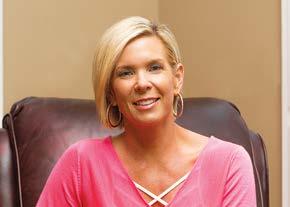
The customer experience is about more than just “customer service.” Those are individual moments, but are only part of the customer’s overall experience of interacting with your brand start to finish, not just during the time spent interacting with your employees. Our conversation was based on our belief that customers won’t really notice a “normal” experience with your shop, only an “extraordinary” one. Here’s more of what Sheryl and I discussed.
Mike: What else should go on during that conversation?
Sheryl: Talk to the customer about being their advocate throughout the claims and repair process. Give them a designated person to be able to contact. At our shops, we designated a person who was the contact for each customer, the one responsible for contacting that customer every other business day. The customer had that person’s email address and cell phone numbers so they could call or text if they had questions in between those updates.
Another one of the most important things that I think that shops often do not communicate clearly is the value of their shop’s warranty. Early on, talk about what that warranty includes, what that means for the customer. Often you hear insurance companies talk customers into going to their preferred network or their DRP shop because of the warranty. So it’s important that shops talk about their warranty early on, and explain even in that first in-person repair consultation what it means to the customer.
Mike: Sheryl, we talked previously about what goes into creating an extraordinary customer experience prior to them even arriving at the shop. Now let’s talk more about what else needs to happen prior to repairs.
Sheryl: Sure. So once we have the customer in front of us, in our office, how do we communicate the value of choosing our shop? No one likes to go somewhere and be “sold.” No one wants that pushy, aggressive salesperson just trying to sell them something. So I always say: We don’t have to sell; we just have to communicate the value of our shop to customers.
As I’d mentioned, talk about the shop certifications you have, and why that certification matters to them. Show not just that you have advanced training and equipment to repair the vehicle back to when it was when it was manufactured, but also explain how that helps maintain the vehicle warranty.
Mike: So after that is it just about fixing the car correctly?
Sheryl: No, there’s more to it. We want to treat customers as if they are our VIPs, so when we give them that extraordinary experience, they then become brand evangelists. Sure, you have to fix the car the way that the manufacturer says it should to be fixed, using the repair guidelines from the manufacturer. But you’re supposed to do that. So that’s average. That’s normal.
You have to look for opportunities to be extraordinary. You have to look for opportunities to be generous with your customers, to do things that they do not expect. Maybe the customer’s car has a scratch on the other side of the vehicle that you are able to buff out. When you are generous with the customer, you help create an extraordinary experience.
Mike: What else do you see going into that process?
Sheryl: Well, one of the most important things that we can do with that customer during repair is always overcommunicate. Mike, you wrote a column once citing that quote from author Jon Gordon who said, “Where there is a void in communication, negativity will fill it.” So communicate to avoid those voids, even from the beginning, through the disassembly phase, through writing a complete repair plan. Keep the customer informed on what is going on. Even if you’re waiting for someone else—maybe on the bill payer to approve a supplement—make sure that the customer is in the loop during the entire process.
And you have to be responsive. We have to respond to the customer quicker than they expect. One of the things we asked our customer service team at our shops to do was to always have the customer updates done before 10 a.m. Because if a customer is expecting a phone call from you today, if they don’t hear from you before lunch, they’ll automatically assume you’re not going to call. So it’s important to always respond quicker than they expect.
Mike: So does that bring us to the vehicle delivery process after repairs?
Sheryl: That’s right. We’ve got to finish strong. And so one of the things that we did was we set up delivery appointments in order to make sure we were prepared and had the time we needed to spend with that customer. The first thing that we did at the delivery
appointment was review the repairs with the customer at the car. We were proud of the work that we did. We weren’t trying to hide anything. So we reviewed the repairs with the customer, while at the same time talked again about the warranty. We talked about the CSI survey that they’d be receiving in a couple of days, stressing that we value their feedback. And then after all of that is done, that is at the point where we will collect any kind of payment or insurance check that we needed from the customer.
Mike: Is there more about the payment process that can help create an extraordinary customer experience?


Sheryl: Yes, we would send the customer the final bill electronically, and offer them the option to pay electronically if they wanted. We could send them a link before they even showed up at the shop for the delivery appointment to take care of that, if they wanted. Some people want to do everything on paper, while others want to do everything electronically. So giving customers options is important.
Mike: Sheryl, I can’t thank you enough for sharing your expertise with me on creating an extraordinary customer experience—so that I can share it with the readers of my column. I’m proud to work with you.
So, readers, what goes into creating an out-of-the-ordinary experience for the customers at your shop? I’d really love to hear your ideas. Shoot me an email at mike@ collisionadvice.com!
The
COLOR-Q system is a high-performance dedicated Muli-Angle

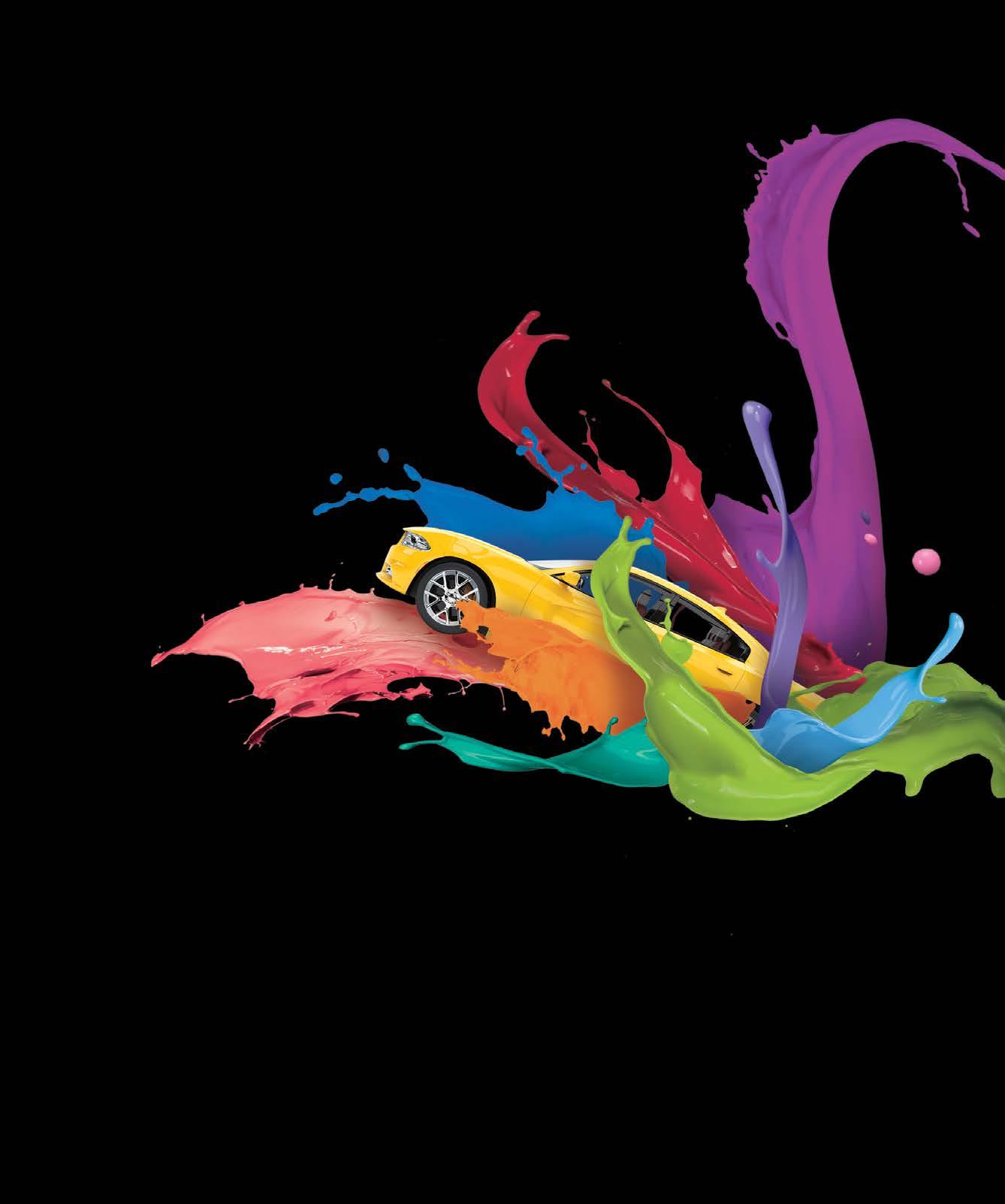
that makes it easy
simple to find the color most similar to the target color. It also provides cutting-edge color search correction System. Provides a color combination by correcting the closest matching color to the target color. (NR-94 and TOPAZ)

Tesla’s price cuts have helped the automaker find new customers and grow its sales throughout the U.S. and other markets. But for companies that have made a business out of renting Teslas to customers on a subscriptionbased platform, it spells disaster.
Autonomy, a company that has quickly become the “Tesla” of its respective sector, nearly became a victim of these price cuts.
Scott Painter, CEO of Autonomy, has made Teslas and other EVs available to people in a subscription, paying an up-front price and then a monthly rate more flexible than leasing and less expensive than a long-term rental.
The fleet of Tesla vehicles Autonomy has accumulated over the past few years has a value, and when the EV maker’s price cuts took effect, that value diminished significantly.
“Instead of having an $85 million fleet, we suddenly had a, say, $56 million to $57 million fleet in one day,” Painter said to Bloomberg. “We were very vulnerable to our lenders in that moment.”
The cuts affected Autonomy’s business so much it went through a forbearance process to gain $12 million in new capital and shrunk its workforce significantly from 120 to 45.
Painter and Autonomy initially planned to have 23,000 EVs ordered, but goals announced last year were pushed aside due to the depreciation of its fleet. Autonomy has 1,300 cars currently and will need roughly 1,700 more to break even, Painter said. This will require $20 million more in funding, which will likely unlock $100 million in borrowing capacity.
Autonomy continues to expand into new markets, making its subscription service available to customers across the U.S.
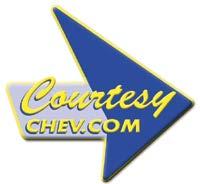
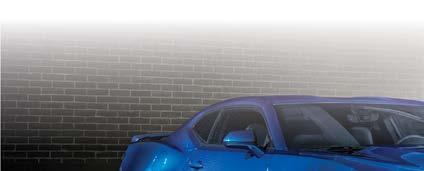
Texas Gov. Greg Abbott on June 13 signed House Bill 3297, eliminating annual vehicle inspections in the state.
Residents in the 17 most populous counties—mostly those surrounding major cities—will still have to get their gas-powered vehicle’s emissions tested annually. Diesel-powered vehicles and motorcycles are exempt.
The change goes into effect in 2025. Residents will still pay an annual inspection fee of $7.50, but they won’t have to get the vehicle looked at. New registrations will cost $16.75 per vehicle.
The Automotive Service Association (ASA) in May called on the Texas Senate to veto the bill, after it was passed by a House committee.

Research, including a study commissioned by the legislature in 2017, unequivocally demonstrated regular testing of a vehicle’s tires, brakes, windshield wipers, lights and beams, seat belts and other components plays

a critical role in preventing injuries, deaths and loss of property, the ASA said.


“The Texas Senate has an opportunity to do the right thing for their constituents by not advancing this bill,” said Bob Redding, ASA’s Washington, D.C., representative. “Texas has a successful vehicle inspection program that protects the motoring public. This privatepublic partnership program should not be eliminated. Instead, the legislature should heed its own study’s recommendations and consider adding additional inspection items to the program.”
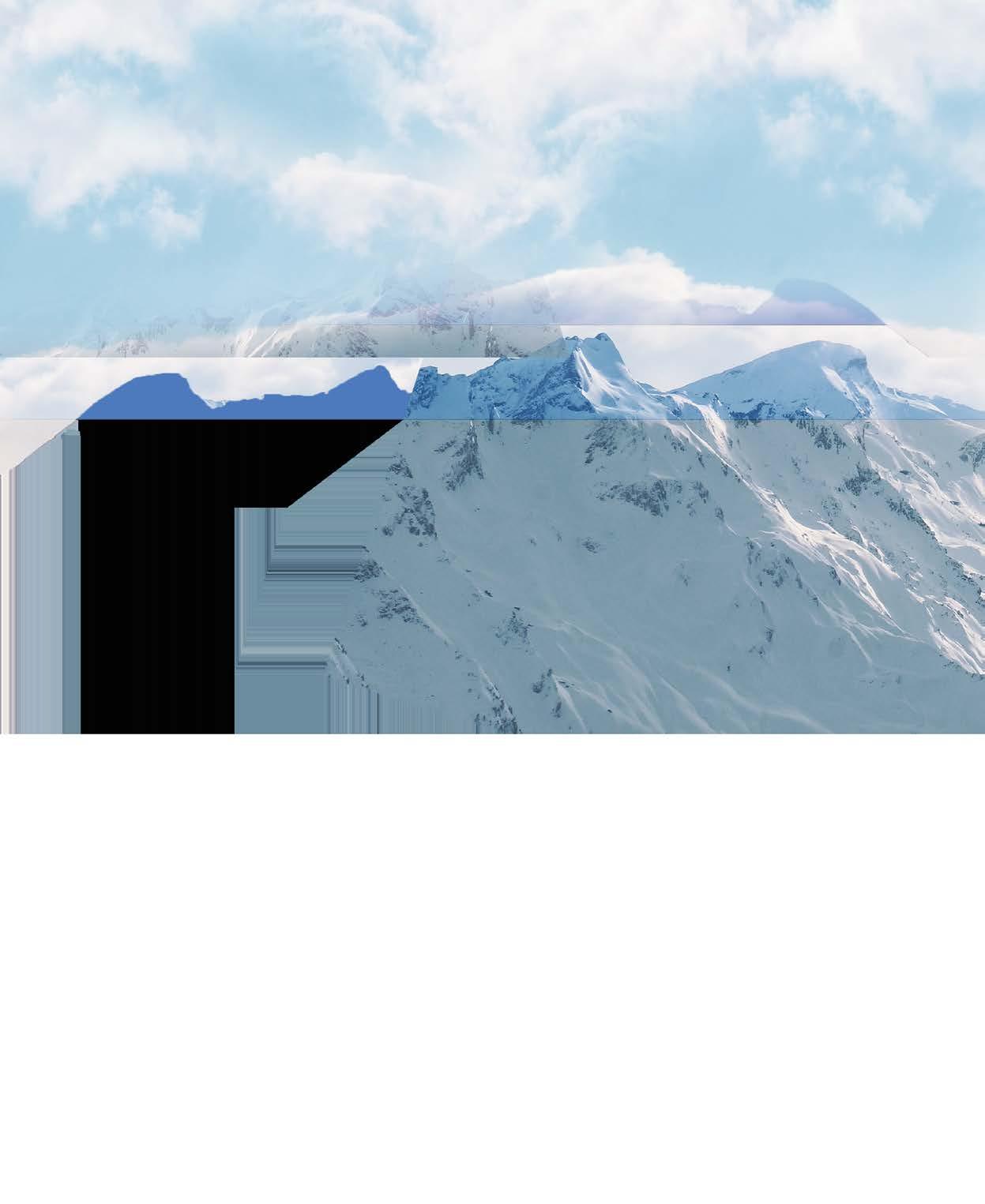



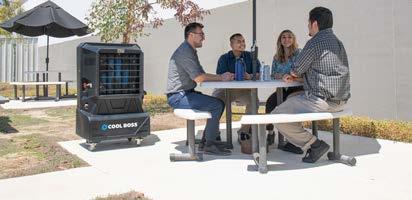


At any moment, someone in the collision repair industry could be impacted by a natural disaster or other catastrophic event.
“If that were to happen, the Collision Industry Foundation (CIF) ensures that others in our industry will be there in support,” said CIF President Michael Quinn, who is also president of AirPro Diagnostics. “We help each other, we look after each other, and we connect the industry.”
Prior to the creation of CIF in 2001, members of the collision industry rallied donations and volunteers to perform works that would benefit organizations such as Habitat for Humanity and Ronald McDonald House. Although their efforts were successful, Quinn said they were the result of the work of a small group of people and required a substantial personal investment in time and administration.
CIF project leaders discussed building a foundation to coordinate fundraising, create committees, gather volunteers and brainstorm. At the time, volunteers had committed to raising $500,000 toward constructing a medical center for Camp Make-A-Dream, a free camp for children with active cancer. They realized it was no longer possible for a handful of volunteers to coordinate a project of such enormity.
individuals with suppliers or other industry providers, and/or lending a hand to rebuild or retool.
Since its inception, CIF has managed the funds donated to support charitable and educational causes in the collision industry. They are disbursed after trustees, selection committee volunteers and leaders review the projects. Due to the complexity of some projects, CIF funds the foundation’s administration.
of assistance. Quinn said this differed from past disasters or catastrophic events that were tied to a particular geographic area or location. CIF had not dealt with a situation of this magnitude.
CIF used the reserves in the Disaster Relief Fund to make an initial commitment of $100,000 to assist those impacted by COVID-19. The organization also put out a call to the industry for donations. The outcome was raising an additional
“We could not fulfill our mission without our entire network of donors, volunteers and supporters,” added Ann Gonzalez, CIF vice president. “No words can express the depth of our thanks to this industry for allowing us to do this work on their behalf. Speaking for the CIF board, we thank our CIF community from the bottom of our hearts.”
In 2022, the annual fundraising gala was held after being on hold for nearly two years due to the pandemic. “This event provided the opportunity to bring industry individuals together as well as raise additional funds through event ticket sales, raffles and silent auctions,” said Quinn. For 2023, the event is going to be held during its usual timeframe on Jan. 18 in Palm Springs, CA.
Typically, raffle and auction items are donated to CIF so all proceeds from those sales go directly to the Disaster Relief Fund.
As a result, they formed CIF, a 501(c)(3) nonprofit organization incorporated April 26, 2001. CIF’s founders include Mark Claypool, Glen Funk, Dan Greenwald, Marco Grossi, Jeanne Silver, Charles Sulkala and Doug Webb
The organization’s mission is to provide emergency relief by securing and distributing donations to collision repair professionals who have experienced significant losses due to natural disasters or other catastrophic events. That assistance can be monetary, connecting
In the early years, CIF worked closely with the National Auto Body Council (NABC), whose members suggested worthy causes. Some of the charitable projects funded by CIF have included donations to local causes, including children’s hospitals and abused women’s outreach programs; donations to sponsor student participation at the 2005 WorldSkills competition and fund the purchase of a handicapped accessible school bus for Camp Make-A-Dream; and The Hurricane Katrina Disaster Relief Fund for collision industry victims. Following Hurricane Rita, the Disaster Relief Fund was created to aid industry victims of any natural disaster.
Until 2020, CIF coordinated fundraising to raise money for specific disasters. Members of CIF’s Board of Trustees typically reach out to organizations that have donated in the past or they feel would be good candidates. The CIF Gala, typically held annually in January, has been a major fundraiser for CIF since 2010.
During the pandemic, the need for assistance was widespread across the country due to layoffs and reductions in work hours at collision repair shops. Hundreds of individuals found themselves in need
$150,000 that was dispersed to individuals in need. CIF Trustees vetted each request and responded to more than 700 requests for assistance from 38 states.
Through the pandemic, CIF implemented new methods of fundraising. These included online events, such as a magic show and a silent auction.
In addition to the call for pandemic assistance, in 2020, CIF participated in Giving Tuesday, a national day of philanthropic support. Forty donors contributed to these efforts. The organization has continued to participate in Giving Tuesday for the past two years.
The CIF Annual Donor program was introduced in 2021 so it would be easier for industry organizations to make an ongoing commitment to CIF, streamlining the donation process for CIF and supporting organizations. There are currently 36 donors, up from 23 annual donors in 2021.
“Our annual donor commitments make it possible for CIF to provide assistance to our industry brothers and sisters in times of crisis,” said Quinn. “We appreciate their generosity and ongoing support and are honored to conduct work on their behalf.”
At the July 2022 gala in Pittsburgh, PA, CIF was proud to present a check for $15,000 to Bryan Miller, an individual from the collision industry who displayed heroic bravery and resiliency despite suffering thirddegree burns over most of his body. Miller hopes to find a new role in the industry and continue working in a shop. Numerous donations of money, as well as training, equipment, etc., have allowed him to plan his next steps.
Unfortunately, Quinn said there will always be another disaster like the record flooding in Kentucky or wildfires in Oregon, or another health care emergency like COVID-19. “It is our intention that CIF will always be there—reaching out through our distribution channels, seeking to identify individuals in need, and providing whatever assistance we can,” he said.
Future plans include expanding the annual donor program and gaining visibility with additional industry organizations. CIF is increasing the number of trustees on its board to fill the seats with leaders from various industry segments and building closer connections with other nonprofit organizations.
“People who become connected with CIF do so in support of our mission and vision, with a desire to contribute and serve,” said Quinn. “We are part of an industry that looks after our own, who have big hearts and take generous actions. Whatever the need, CIF is there and will be there, continuing our legacy of service.”
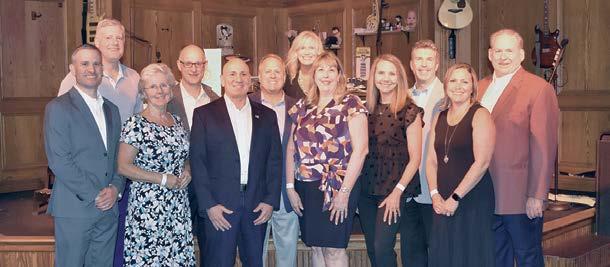
“We could not fulfill our mission without our entire network of donors, volunteers and supporters. No words can express the depth of our thanks to this industry for allowing us to do this work on their behalf.”
ANN GONZALEZ CIF VICE PRESIDENT

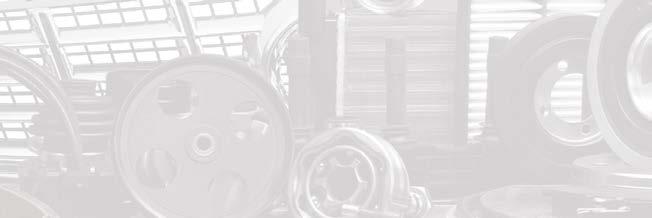

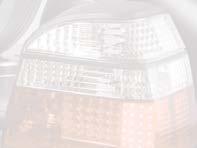





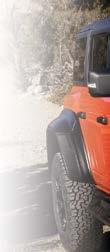


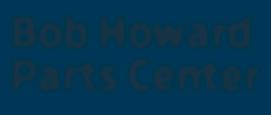


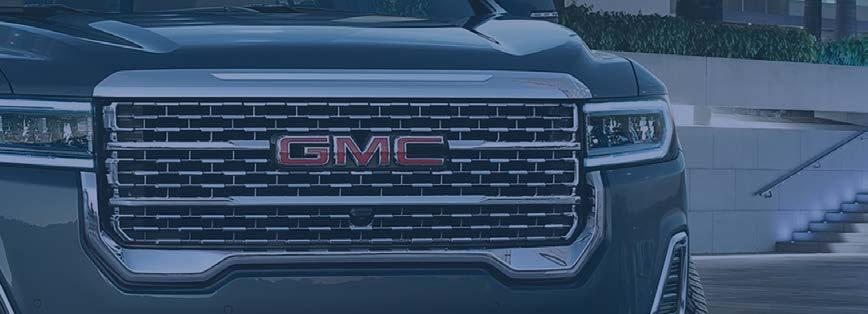

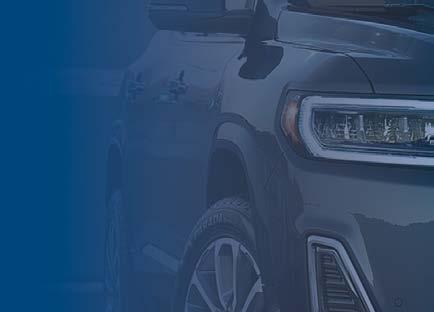


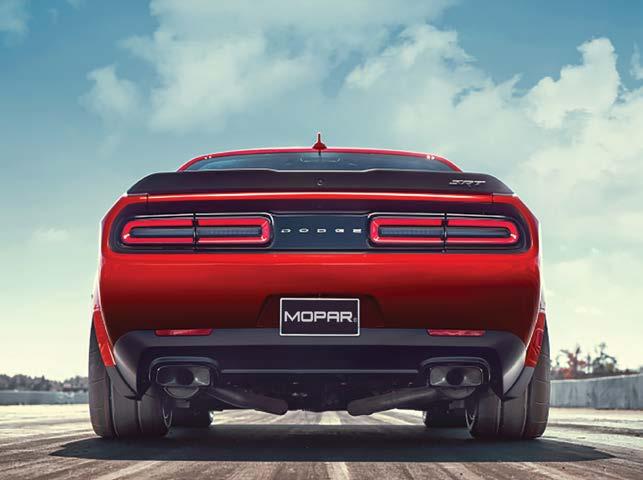

Please contact these dealers for your Honda or Acura Genuine parts needs.
Mike Maroone Honda
Colorado Springs
888-431-0294
719-785-5045
Dept� Hours: M-F 7-6; Sat 7-5 rick williams@mikemarooneauto com
Mile High Honda Denver
800-548-4730
303-369-7800
Dept Hours: M-F 7-6 crehburg@autotree net
Honda of Harvey Harvey
800-943-4227
504-368-5687
Dept Hours: M-F 7-5:30; Sat 7:30-12 tmaywalt@millsautogroup com
Walker Honda Alexandria
318-448-8255
318-445-6677
Dept Hours: M-F 7:30-5:30 hondaparts@walkerautomotive com
Garcia Honda Albuquerque
800-677-6632
505-260-5003
Dept� Hours: M-F 7:30-6; Sat 8:30-5 Parts206959@garciacars com
AutoNation Honda
Lewisville
800-344-8611
972-219-0021
Dept Hours: M-F 7-7; Sat 8-5
Honda Cars of McKinney
McKinney
972-569-4276
972-569-4222
Dept� Hours: M-F 7-7; Sat 7-5 Gene chenault@hendrickauto com
Honda of Frisco Frisco
866-442-2711
972-731-3176
Dept Hours: M-F 7-7; Sat 7:30-5:30 cedgar@mcdavid com
Honda of San Marcos San Marcos
866-392-1313
512-392-1313
Dept� Hours: M-F 7:30-6; Sat 9-5 csmith@hondasanmarcos com
McDavid Honda Irving Irving
800-492-4464
972-790-6003
Dept Hours: M-F 8-6 srichardson@mcdavid com
Northside Honda
San Antonio
800-727-8705
210-340-0831
Dept Hours: M-F 8-5; Sat 8-5 hondaparts@mynshonda com
Rusty Wallis Honda Dallas
877-466-3272
214-328-3891
Dept� Hours: M-F 7-7; Sat 8-5 darryldotsy@rustywallis com
COLORADO
Mile High Acura
Denver
800-548-4730
303-369-7800
Dept Hours: M-F 7-6 crehburg@autotree net
Acura of Baton Rouge
Baton Rouge
866-733-2861
225-756-6166
Dept Hours: M-F 7:30-6; Sat 8-5 dlavigne@acurabr com
Walker Acura
Metairie
800-359-8555
504-465-8555
Dept Hours: M-F 7:30-6; Sat 8-2 parts@walkeracura com
Autonation Acura League City
800-749-6227
713-371-4700
Dept Hours: M-F 7-7; Sat 8-5 CarranzaB1@autonation com
Hiley Acura Fort Worth
888-454-0947
817-809-7762
Dept Hours: M-F 7-6; Sat 8-5 parts@hileyacura com
Sterling McCall Acura Houston
713-596-2337
713-596-2338
Dept Hours: M-F 7:30-7; Sat 7:30-4 jlambert@sterlingmccallacura com
Team Gillman Acura
Houston
833-738-3637
281-209-4200
Dept Hours: M-F 7-7; Sat 7-5 anoptsdpt@teamgillman com
Jody Wilkinson Acura
Salt Lake City
800-234-0875
801-323-0492
Dept Hours: M-F 7:30-6; Sat 8-5 rick@jodywilkinson com
Mike Hale Acura
Murray
800-292-4595
801-263-0202
Dept Hours: M-F 7:30-6; Sat 7:30-5 pgoold@mikehale com




As automotive technology, like ADAS and electric vehicles, evolves at what feels like an unprecedented rate, it can be scary, but it’s also an opportunity to dream big.
That was the message in CEICA’s latest webinar June 29, “The Future Digital Landscape: Embracing Blue Sky Thinking,” with Chuck Olsen of AirPro Diagnostics.
buzzword,” Olsen said. “A lot of cool stuff happens.
“Genuine blue sky thinking needs to be open to any avenues of thinking,” Olsen added. “It needs to break free from any limitations, to solve problems and how we can move forward.”
It can be done individually or in a group—the point is that ideas beget more ideas.
“You don’t want to rule out any solutions, no matter how infeasible it might seem,” Olsen said.
“One person might come up with a blue sky idea that’s completely impossible, but it might inspire another. That’s where innovation takes place.
headlights, electronic fuel injection, air bags, seat belts, electric steering, remote start and cruise control.


Within the last few years, more ADAS features, electric and hydrogen power propulsion, and autonomous driving have been introduced or explored.
“All these [new] systems are dependent on things that happened before,” Olsen said. “As new ideas come into play, old ideas have to be accounted for, so we continue to build on them.
“Looking at those things and how we got there is important, so we can make solid decisions as we go forward,” he said.
The blue sky brainstorming stage is only the beginning, Olsen said.
some rules,” he said. “The only consistency in a business is continued change. Same thing with technology.”
The third and final step is bringing the idea down to the “brown ground.”
“The brown ground is where things are happening,” Olsen said. “When it comes down to it, sometimes you don’t have permission to do what you want to do. Those limitations are discovered on the ground.”
As a recent example, Olsen said Tesla overcame the microchip shortage that began in 2020 by reprogramming firmware in its vehicles.
“I’m sure there were several meetings to come up with the ideas to make that happen,” he said.
“Blue sky thinking” is open-minded brainstorming—developing ideas and possible solutions that might seem untethered to reality at first, but could spark something that can be put into practice.
“Blue sky is much more than just an executive management

“Every idea is a good idea in your head—you need to say it out loud to get others’ feedback,” he said. “It might be a bad idea after all, but it could lead to another better idea.”
Olsen said the main drivers of innovation in any industry are safety, performance, economics and convenience.
In the automotive industry, those drivers have led to innovations like new sheet metals, adaptive
The next step is bringing down an idea from the blue sky to the “green line,” where you start looking at how the idea might work—or not—with existing rules and regulations.
“This is where economics come in—is it feasible,” Olsen said. “As you bring [the idea] down to earth, you have to consider other factors.”
If the idea doesn’t work with current rules, Olsen said that isn’t necessarily a roadblock.
“It might be a chance to change
Companies are developing advanced lidar, Level 5 autonomous driving technology, new air bags and holographic displays.
“These are things of scientific fiction but they’re coming into reality,” Olsen said. “We have to figure out how are we going to embrace this, as they will affect what happens in our shops, in claims and writing estimates.”
To watch a full replay of the webinar, visit www.cieca.com/MEETINGSEVENTS/ciecast-webinars.
last because it anticipates changes in automotive technologies and market evolutions.”














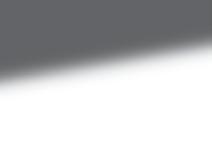




The signers of the pact said the agreement addresses independent repair facilities’ access to diagnostic and repair information, including telematics data needed to diagnose and repair a vehicle if not otherwise available, for all vehicle technologies and powertrains, including gasoline, diesel, fuel cell, electric battery, hybrid and plug-in hybrid electric powertrains.
The pact also includes a pledge to work together on education and training programs so independent repairers know where and how to obtain repair information, and a forum to discuss future repairer needs as they develop with emerging technologies.
In a press release announcing the pact, SCRS said, “As state legislatures and Congress consider automotive right to repair laws, including the REPAIR Act, the parties noted: ‘…independent repairers and automakers are not at odds on automotive data access, but rather in lockstep on this fundamental principle: consumers should have

choice when it comes to repair options and the ability to have their vehicle serviced in well-equipped shops by well-trained technicians anytime, anywhere, anyplace.’”


OEMs only agree to give access if the data “is not otherwise available” through the OBDII port, meaning a shop could be forced to subscribe to multiple third-party tools to get access; and it fails to address the safety and security of the wirelessly transmitted vehicle data.

The REPAIR Act is a comprehensive and critical piece of federal legislation that preserves competition, affordability, accessibility and a vibrant supply chain, ACA said.
that yields the highest quality safety outcomes at a fair price for drivers.”

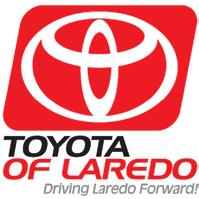
However, in its own press release objecting to the pact, ACA said the agreement is not only designed to create confusion, but also has numerous flaws, including the fact it is non-binding and there is no way to force OEM participation or compliance; it does not cover all automakers (e.g. Tesla) and there is no requirement for new OEMs to join; it does not obligate OEMs to provide direct access to telematically generated repair and maintenance data—rather the OEMs have agreed to make data available through OEM controlled systems and tools; the
“ASA has been a steadfast advocate for the right of independent repair shops to vehicle service information since before the 2002 service information agreement it signed with automakers,” said Scott Benevidez, ASA Board chairman and owner of Mr. B’s Paint & Body Shop Inc. in Albuquerque, NM. “Since then, the cars Americans rely on have become increasingly sophisticated, and the rate of innovation will only accelerate. The way vehicle issues are diagnosed and repaired evolves in tandem with advancement.
“ASA is proud to have reached this new agreement with automakers because it ensures ASA members can diagnose and repair their customers’ vehicles without hinderance from telematics nor any other innovation,” Benevidez said. “Most importantly, it maintains a competitive repair market
“While it is welcome news that the auto manufacturing industry acknowledges that ‘consumers deserve access to safe and proper repairs throughout a vehicle’s lifecycle,’ today’s letter... is nothing more than lip service and regurgitated platitudes,” said CAR Coalition Executive Director Justin Rzepka. “This pact masquerades as pro-consumer but, in reality, does nothing to expand consumer choices and give a vehicle owner access to repair data.
“Any new agreement touted in the letter is entirely unenforceable and nothing more than window dressing,” Rzepka continued. “This letter and agreement should be seen for what they really are---an attempt to prevent Congress from advancing consumerfocused legislation like the SMART and REPAIR Acts that would break the monopoly on auto parts and protect consumers’ rights to repair options and data access. The CAR Coalition remains committed to pursuing these bipartisan bills in order to put consumers, not auto manufacturers, in the driver’s seat when it comes to vehicle repair.”
Source: SCRS, Auto Care Association, CAR Coalition
“ASA has been a steadfast advocate for the right of independent repair shops to vehicle service information since before the 2002 service information agreement it signed with automakers,”
SCOTT BENEVIDEZ
ASA BOARD CHAIRMAN AND OWNER OF MR. B’S PAINT & BODY SHOP INC
Ford was America’s best-selling brand in the second quarter of 2023 on the strength of its trucks, EVs and new vehicle launches, posting sales gains of 11.2% for the quarter.
Ford is now the best-selling brand and has the best-selling truck in America for six consecutive months this year. F-Series has been the bestselling truck in America for 46 years in a row.
Ford truck sales accelerated in Q2, climbing 26.2% on the strength of the new Super Duty and improved inventory flow. This is the second straight quarterly gain for Ford and best Q2 sales performance since pre-COVID 2019.
Ford was the No. 1 selling truck manufacturer in Q2 and for the first half of the year. Sales climbed 26.2% in Q2. Through the first half of 2023, Ford’s overall truck sales totaled 549,625, up 23.1% and outselling GM’s trucks and vans by approximately 61,000 trucks.
Ford EV Sales Gain Momentum
Ford’s EV sales continue to grow building on the sales momentum of the F-150 Lightning and Mach-E, which achieved higher sales
AkzoNobel Vehicle Refinish
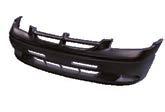
North America announced the expansion of its partnership with Dave Kindig. Originating in November 2016, the partnership now expands to June 2027.

Kindig is now brand ambassador for AkzoNobel’s flagship Sikkens brand in North America, in addition to the Modern Classikk by Kindig line.
Launched in 2017, the Modern Classikk paint line is based on the Sikkens platform and has grown from an initial pallet of 26 colors to 40 eye-catching colors with the same modern classikk vibe as Kindig himself.
AkzoNobel’s John Griffin, regional director, automotive and specialty coatings, Americas, shares Kindig’s enthusiasm for the continuation of the partnership. “Everything about Dave Kindig exudes talent, quality and excellence,” Griffin said. “We are confident that continuing with him as spokesperson for our Modern Classikk and Sikkens brands will be mutually beneficial.”
Source: AkzoNobel
through stronger inventory.
“Ford achieved both best-selling brand and truck for six consecutive months this year on the strength of F-Series, vans, our new Escape and F-150 Lightning,” said Andrew Frick, vice president, sales distribution, and trucks. “Our EV sales continue to grow. Improved Mustang Mach-E inventory flow began to hit at the end of Q2 following the retooling of our plant earlier this year, which helped Mustang Mach-E sales climb 110 percent in June.”
F-150 Lightning sales were up 119% in Q2 over year ago and a 4.1% gain from Q1. F-150 Lightning continues to attract new customers to Ford with 50% new to the brand, based on most recent conquest data. Year-to-date, Ford EV sales rose 11.9%. Ford’s overall EV sales were up 35.5% in June.
With the launch of Ford’s all-new Super Duty pickup and chassis cabs, F-Series sales increased 34% increase in Q2 on sales of 212,516 F-Series trucks. That’s up 24.7% from the first quarter. F-Series total industry share hit almost 36% in Q2—up almost 5 full percentage points over Q2 last year.
Through the first half of this year, F-Series remains America’s best-selling truck on sales of 382,893 trucks—outselling secondplace Silverado by approximately 118,000 trucks. Ford Maverick sales increased 7.8% in Q2 ahead of additional capacity coming online in July to meet continued strong customer demand.
Combined F-Series, Ranger and Maverick sales of 246,155 pickups outsold all of GM’s Silverado, Sierra, Colorado, Canyon and Hummer EV in Q2 of this year. Ford’s combined sales of F-Series, Ranger and Maverick were up 26.7% in Q2 over a year ago.
The strength of Ford’s vans continued to shine for the quarter. Transit continued as America’s bestselling van in Q2 on sales of 32,031— up 30.1%, compared to year ago. Ford E-Series vans increased 63.7% in Q2 and are up 55.7% this year. Ford was No. 1 in commercial sales, based on the most recent registration data through April. Ford’s U.S. Class 1-7 commercial trucks and vans share grew to 40.3%, up 1.0 percentage point from the same period a year ago.
Meanwhile, Lincoln closed the quarter with sales gains thanks to improved inventory. Navigator Q2 sales increased 20.1% on sales of 4,688 vehicles, while sales of the new Lincoln Corsair climbed 27% in June to end the quarter. Nautilus sales also saw a 58.5% increase in June at the end of Q2.

BlueCruise, Ford’s driver assist technology, continues to be a hit with customers. Customer usage has now surpassed 90 million hands-free driven miles, cumulatively, a 40% increase since the end of Q1. Ford’s latest version of the technology, BlueCruise 1.2, allows hands-free lane changes with the tap of a turn signal and delivers a more seamless driving experience. Ford will continue to improve the BlueCruise experience for its customers and deliver it through over-the-air updates.
Sales of the new Escape were up 28.7% in Q2. Forty percent of Escape Q2 sales are the new ST-Line series. Nearly half of the Escape Plug-in Hybrid customers are new to Ford.

Source: Ford
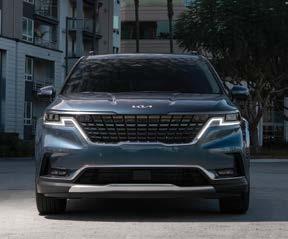
Competitive Pricing with clean and accurate inventory.

Servicing Ford, Lincoln & Mercury parts and Ford Medium-Duty Truck parts up to F-750.



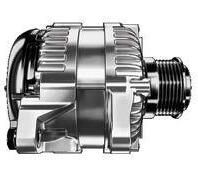

Our huge inventory of collision parts qualifies us as one of the few Ford Authorized Crash Parts Centers



Collision price matching through Collision Link, Parts Trader and OPS.
We can do business how you like to do business with Collision Link, RepairLink, OPS, Parts Trader, CCC Parts, email, fax, or a good old-fashioned phone call with our experienced parts sta .


We buy our collision parts by the truckload to get you the very best deal and the largest inventory.

Very competitive on Motorcra , Diesel and all maintenance parts.
We deliver as far north as Waco, south to San Marcos, west to Marble Falls, East to Bastrop, southwest to Dripping Springs, and everything in between multiple times per day!
Overnight delivers to over 200 cities across Texas + service to Oklahoma and Louisiana with 1 - 2 day service.
Noon delivers to most cities within 100 miles of the dealership.
Stellantis on June 27 launched Free2move Charge, a 360-degree system that will seamlessly deliver charging and energy management to address all EV customer needs, anywhere and in any way. Managed by the new Stellantis Charging & Energy Business Unit, Free2move Charge addresses electric vehicle customer needs at home, in their business and on-the-go.
“As the pace of mainstream EV adoption accelerates, our customers need us to be more than just a mobility provider,” said Ricardo Stamatti, Stellantis senior vice president, Charging & Energy Business Unit. “We are taking the lead in establishing a dedicated business unit that will support our bold electrification strategy and act as a natural extension of our iconic brands. Free2move Charge is the first product rolling out, exemplifying our purpose of delivering performance, value, sustainability and electrified mobility freedom for all.”
Making it easy to Always Be Charged (the e-ABC Promise), Free2move
Charge also makes it smart, understanding users’ needs and optimizing overall energy management to improve efficiency, reliability and access, reducing the total cost of ownership and maximizing environmental benefits.
Working with a Free2move e-Genius team, customers will be able to create a personalized package they can change and adapt at any time during the ownership experience, allowing it to evolve and always be tailored to their needs. e-Genius support will be available first in Europe.
By removing barriers to battery electric vehicle ownership, including charging anxiety, Free2move Charge is a key tool to achieve the goals of the Stellantis Dare Forward 2030 strategic plan, including reaching a 100% passenger car battery electric vehicle (BEV) sales mix in Europe and a 50% passenger car and light-duty truck BEV sales mix in the U.S. by 2030.
Free2move Charge: Built on Three Pillars
Free2move Charge Home delivers private customers support with installation, financing and warranty
of home charging and other energy hardware and services. Options can range from AC charging cables and wall boxes today to Vehicle-2Home, Vehicle-2-Grid and complete energy management systems with cutting-edge features like touchfree wireless solutions and inductive robot charging under development for future releases.
Free2move Charge
Business tackles all hurdles as a onestop-shop platform with a full suite of charging and energy services: earlyon support, estimation of initial and future running costs, right-sizing of charging infrastructure, installation, maintenance and public charging access while on the go.
Free2move Charge GO guarantees seamless access to the largest possible curated network of public charging points through partners in North America, Europe and other regions to be announced soon. In addition to access, payment and 24-7 support, Free2move Charge GO will progressively launch leading features like Plug and Charge, reservations, loyalty programs, subscriptions, prepaid packages, single invoice/billing and
even deliver a charge to a requested location when needed.
Free2move Charge will harness the power of the Stellantis Energy Cloud, seamlessly integrating with vehicle-branded mobile apps and the state-of-the-art STLA SmartCockpit platform launching in 2024 to deliver fast, intelligent routes and charging recommendations to customers based on their actual usage and needs. Free2move Charge will guide Stellantis customers through an onboarding process to understand their individual needs, allowing for deep personalization and using AI learning to constantly improve its knowledge about the most convenient individual charging experience.
Free2move eSolutions, a Stellantis tech company, will continue to develop and provide industry-leading charging hardware and software that supports the Free2move Charge ecosystem, as well as non-captive customers, and work with other industry leaders to bring more EV charging solutions to market.
Learn more at free2movecharge. com.
Source: Stellantis
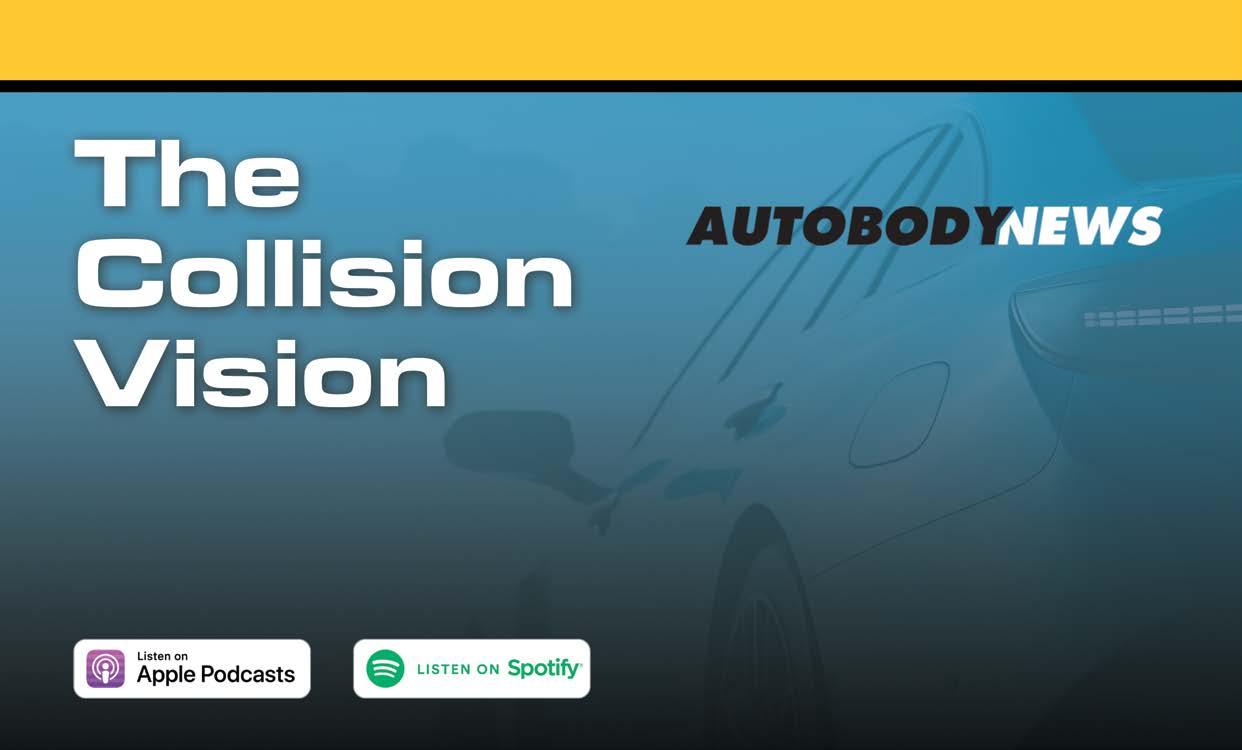
ASE President and CEO Tim Zilke and Senior Vice President of Communications Trish Serratore have announced their plans to retire Dec. 31.
Zilke joined the National Institute for Automotive Service Excellence (ASE) in 1991 and was promoted to president and CEO in 2008. Serratore joined ASE in 1988 and was promoted to senior vice president of communications in 2008. She served six years as president of the ASE Education Foundation from 2012 to 2017, before rejoining ASE as senior vice president.
Dave Johnson has been named ASE president and CEO designate effective July 12. Johnson will assume the title and responsibilities of ASE president and CEO on Jan. 1, 2024, upon Zilke’s retirement.
Donna Wagner has been named as the new vice president of industry and media relations for ASE. She will be responsible for both new and existing company relationships along with representing ASE to consumer, corporate, government and technician audiences.
Source: ASE
The National Highway Traffic Safety Administration (NHTSA) released its first projections for traffic fatalities in 2023, estimating 9,330 people died in traffic crashes in the first three months of the year. This represents a decrease of about 3.3%, as compared to 9,645 estimated fatalities during the same time in 2022.
The first quarter of 2023 represents the fourth straight quarterly decline in fatalities after seven consecutive quarters of year-to-year increases in fatalities, beginning with the third quarter of 2020.

“After spiking during the pandemic, traffic deaths have been on a slow but consistent decline for the past year,” said U.S. Transportation Secretary Pete Buttigieg. “This is an encouraging sign as we work to reverse the rise in roadway deaths, but there is much more work ahead to reinforce this downward trend and make it permanent.”
The projected decrease occurred alongside a 2.6% increase in vehicle miles traveled.
The estimated fatality rate for the first three months of 2023 decreased to 1.24 fatalities per 100 million vehicle miles traveled, down from the projected rate of 1.32 during the same time in 2022.
“This is very good news, but we know that far too many people are dying on our roadways in preventable crashes,” said NHTSA Chief Counsel Ann Carlson. “We are taking significant action to reduce traffic fatalities, including moving forward on new vehicle standards to make cars even safer, investing millions of dollars to improve infrastructure and roadway safety, and working with our state and local partners to help drivers make safe decisions on the road.”
NHTSA estimates that for the first three months of 2023, fatalities decreased in 32 states, while 18 states and Puerto Rico have projected increases in fatalities as compared to the same period in 2022. The District of Columbia remained unchanged.
Last January, Buttigieg unveiled the department’s National
Roadway Safety Strategy to address the national crisis in traffic fatalities and serious injuries. The NRSS adopts the safe system approach and builds multiple layers of protection with safer roads, safer people, safer vehicles, safer speeds and better postcrash care.
The NRSS is complemented by unprecedented safety funding included in President Joe Biden’s Bipartisan Infrastructure Law, including the new Safe Streets and Roads for All grant program. In February, the department announced more than $800 million in grant awards for more than 500 communities to help carry out projects that can address high-crash areas. DOT also launched the next phase of the NRSS, its Call to Action campaign, and released a one-year progress report and accompanying data visualizations that highlight the extent and magnitude of the U.S. roadway safety problem.
Source: NHTSA




PartsTrader data indicates parts delays have eased over the past 12 months, the company reported in a recent webinar. Across all part types—OEM, non-OEM, used and reconditioned—the median delivery time has been steady across the past year at just above one day, according to Greg Horn, chief innovation officer for PartsTrader.
But if nine out of 10 parts needed for a job typically all arrive promptly, Horn said, it’s the outlier that tells more of the story.
per non-OEM part had been trending below OEM parts until the fourth quarter of last year, when the average price of the two types converged because non-OEM parts prices had increased faster (about 9.4%) than OEM since the end of 2021. The average OEM part in May was just $3 more than the average non-OEM part.
But Horn also noted those comparisons include all parts that the OEMs produce, including lower-cost parts such as clips and emblems that non-OEM parts manufacturers don’t offer.
So he ran the same data looking
last year. He pointed to the rapidly increasing number of EV models available, from fewer than 50 in 2021 to 125 or more this year, and more than 150 by 2026.
If you think about the owners of electric vehicles, if you look at the demographics, they are generally in cities, highly-populated areas. The density creates more likelihood of accidents as opposed to being in the countryside.”
PartsTrader data shows the average price per non-OEM part had been trending below OEM parts until the fourth quarter of last year, when the average price of the two types converged because non-OEM parts prices had risen faster than OEM
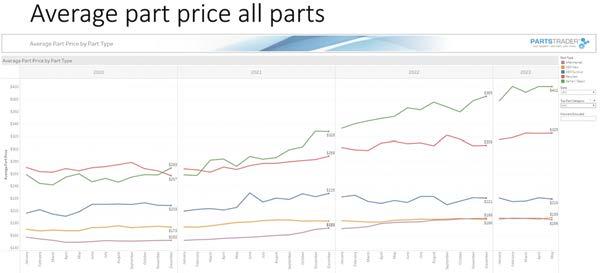
“Averaging dilutes the impact of that one part out of 10 that is significantly delayed,” he said. “By looking at the median plus two standard deviations, you capture 95% of the population.”
That number stood at 11.9 days in May, according to PartsTrader data, Horn said. That’s down significantly from 13.3 days in January, and from 14.7 days in mid-2022—even if it remains higher than the 7.4 days in the first quarter of 2021.
“It’s a good sign that we’re returning toward more on-time deliveries, fewer back-ordered parts,” Horn said.
Horn also shared some PartsTrader data on parts price inflation. The average cost per recycled part in May was $325, up 6.2% from the end of 2022, and up 12.8% from the average ($288) at the end of 2021.
Interestingly, the rise in new OEM parts and non-OEM parts has been significantly lower—and by one measure, the average price of the two types of parts is virtually identical. The average price per new OEM part in May ($189) was up just 3.2% from the end of 2021. The average price
only at top volume parts—bumpers, doors, fenders, lamps and hoods— often available in both OEM and non-OEM versions. That comparison shows both a significantly larger difference in average part price between OEM ($534 as of May) and non-OEM ($316), and more of a difference in parts price inflation between the two.
The average price for those highvolume OEM parts is up 16.8% since the end of 2020, including increases in 2021 (4.8%), 2022 (7.7%) and in the first five months of this year (3.5%). By comparison, the average of those types of non-OEM part price rose sharply (25%) from the end of 2020 until the end of 2022— but has remained basically flat this year.
Industry consultant Terry Fortner, who participated in the webinar with Horn, said that change is likely due to increased cargo costs to import non-OEM parts during the worst of the supply chain issues, which have eased more recently.
Turning to the topic of EVs, Horn said EVs accounted for 7% of new car sales in the first quarter of this year, up from 4.6% during the same period
“Mercedes-Benz alone launched seven new models of full EVs,” Horn said. “You see price reductions from Tesla. You see more and more vehicle types. So now the share of EVs in the U.S. car [fleet] is 3.69 million. That’s roughly about 1%.”
By 2030, EVs are expected to account for 28% of new car sales, and 8% of the U.S. vehicle population.
A 2022 study by European insurer AXA found EVs in that market are involved in 50% more traffic accidents than internal combustion passenger vehicles.
“But think about how fast EVs are,” Fortner said on the webinar. “If you own a Tesla or have driven one, they are rocket ships. And
Horn said the weight of EVs is likely to cause more damage than lighter vehicles in crashes. While the average passenger car is about 3,700 pounds, he said, the Ford Mustang Mach-E, Hyundai IONIQ 5 and Tesla Model 3 are more than 4,600 pounds, the Rivian R1T is 7,148 pounds, and the Hummer EV is more than 9,000 pounds.

“That’s quite a fulcrum when it hits another car,” Horn said.
He also shared photos found on social media of what appears to be a light hit involving a Toyota rearending a Rivian R1T.
“It looks like it was just an impacted rear bumper,” Horn said. “But [the owner] took it to a certified Rivian shop—you can see a full teardown here, including removing the entire bed—and they came up with $42,000. The initial estimate that was done with photo-based estimating… was $1,600. The insurance triaging seems to have missed the mark by a bit.”
“It’s a good sign that we’re returning toward more on-time deliveries, fewer backordered parts.”
GREG HORN
CHIEF INNOVATION OFFICER FOR PARTSTRADER
EVERY VERY INVOICE OICE IS A CHANCE TO WIN! EVERY INVOICE IS A CHANCE TO WIN!






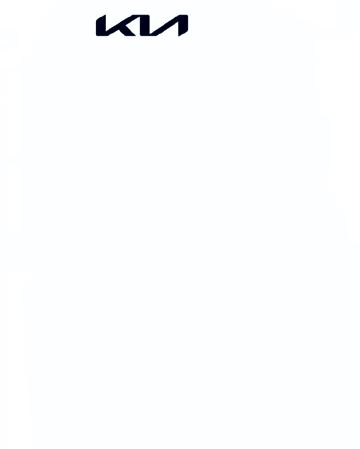
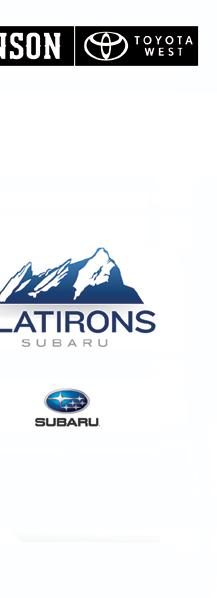




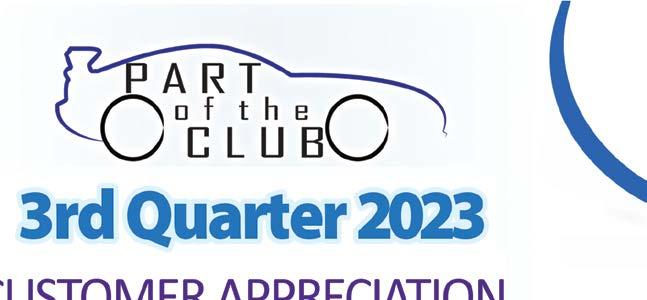




 By John Yoswick Autobody News
By John Yoswick Autobody News
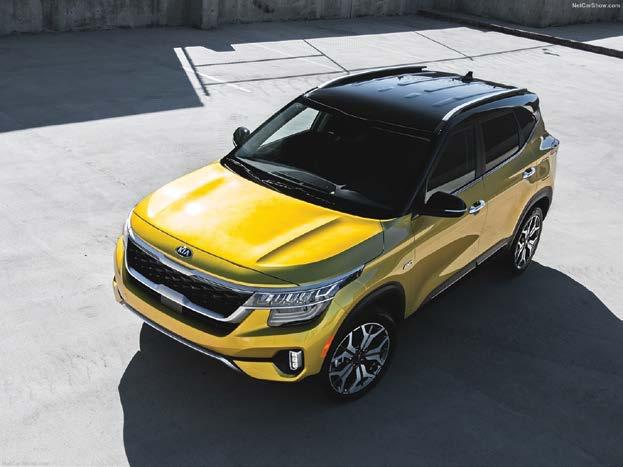







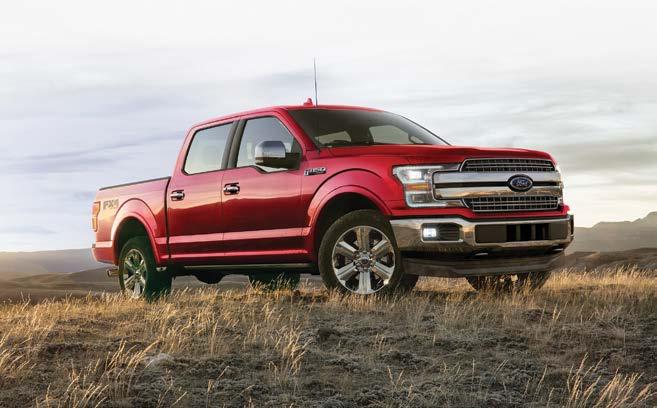
With this year’s legislative session wrapping up in many states, here’s a round-up of some the new laws impacting the collision repair industry.

Rhode Island lawmakers also passed a bill (H 6027) requiring insurers covering a claim in which the insured’s vehicle is a total loss to extend rental car coverage for an additional week after the insured receives the total loss payout. That law became effective without the governor’s signature.
Texas
Gov. Greg Abbott signed into law legislation (HB 3297) eliminating that state’s vehicle safety inspections for non-commercial vehicles as of Jan. 1, 2025.
to which an automobile insurance company controls or influences repair work done” for customers at body shops, and the impact of direct repair programs on both shops and consumers.

Florida
those repairing or replacing glass on a vehicle equipped with ADAS to inform the customer if a recalibration is required and has been performed to meet OEM specifications.
Virginia
Gov. Daniel McKee signed into law legislation (S 925) making it an unfair claims practice for an insurer to refuse to compensate a shop for “documented procedures identified as necessary by the original equipment manufacturer [or] paint manufacturer… when requested by the repairer.”

The new law also limits what insurers can negotiate if they fail to meet the existing state requirement to perform supplemental reviews within four business days after requested by a body shop, and adds an appraisal provision into state law, spelling out the process if a consumer and insurer
Vermont
Just prior to the close of the legislative session, an amendment tacked onto a 122-page otherwise-unrelated bill (S 95) calls for the state’s commissioner of financial regulation to conduct a study of collision repair labor rates, “the use of aftermarket parts, [and] market conditions,” making a report of findings and recommendations” by November 2024.
The bill, signed into law May 31 by Gov. Phil Scott, said the study should look at labor rates in surrounding states as well, and determine whether Vermont should establish a minimum labor rate. It is to examine “the extent
Gov. Ron DeSantis in June signed into law a bill (SB 7052) that gives state regulators there greater authority to investigate insurance companies and levy heavier fines for misconduct. He also signed into law a bill (SB 1002) that prohibits a policyholder from entering into an assignment of proceeds agreement for an auto glass claim under a policy issued after July 1.
Oregon
Lawmakers passed a bill (SB 256) that prohibits the manufacture, sale or installation of any counterfeit supplemental restraint system, or the installation of any part or device that prevents a vehicle from failing to warn the driver that the airbag system is not functional.
Maryland
Gov. Wes Moore signed into law legislation (HB 920) that prohibits an insurer from steering a glass claim to a particular vendor, and requires
Carrying auto insurance is no longer optional in Virginia under legislation (SB 951) signed into law by Gov. Glenn Youngkin; drivers previously could pay a $500 fee to register a vehicle without insurance, but that option is now repealed.
Maine
Both chambers of the legislature passed a bill (LD 1661) that mandates that liability insurance policies cover the costs of towing and storage of certain vehicles.

Minnesota, Arkansas and New Mexico
Minnesota Gov. Tim Walz signed into law legislation (HF 30) increasing the record-keeping requirements for scrap metal dealers purchasing a detached catalytic converter. Similarly, Arkansas Gov. Sarah Huckabee Sanders signed into law an Arkansas bill (HB 1365) aimed at curbing catalytic converter theft, as did New Mexico Gov. Michelle Lujan Grisham (SB 133).
The driver of a Tesla involved in a crash in California in 2019 that caused the deaths of two people in another car has been sentenced to two years of probation, after pleading no contest to two counts of vehicular manslaughter.
The case is significant as it is believed to be the first felony prosecution in the U.S. involving a driver who was using a driverassist system like Tesla’s Autopilot.
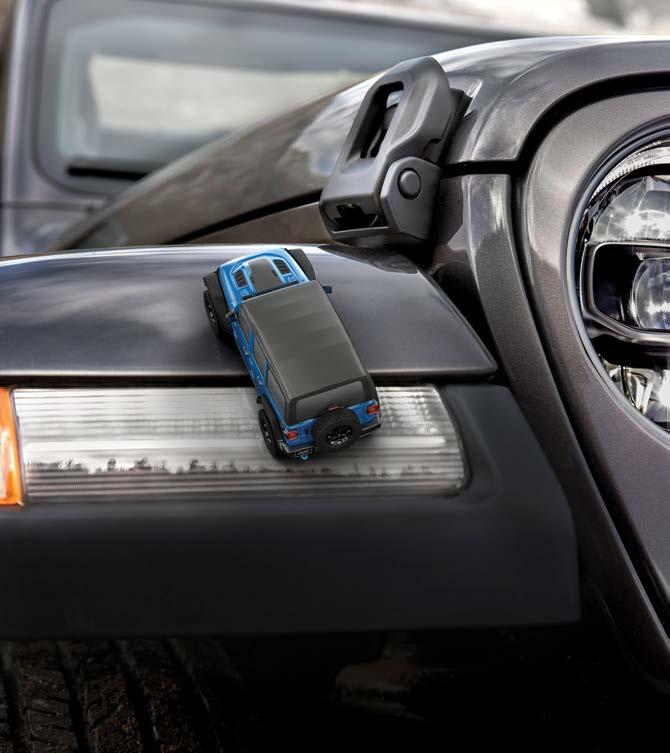
At a preliminary hearing in March 2022, prosecutors said Kevin George Aziz Riad was driving the Model S when it ran a red light at Vermont Avenue in Gardena, CA, at 74 mph, resulting in a fatal collision with a Honda Civic. Riad was believed to be operating the Tesla on Autopilot when the crash occurred.
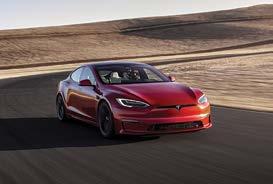
The crash resulted in the deaths of Gilberto Alcazar Lopez, 40, and Maria Guadalupe NievesLopez, 39. Relatives of the
victims said the couple was on their first date at the time of the crash. Riad and his girlfriend, who was a passenger in the Tesla, suffered minor injuries and were hospitalized.
As reported by the Daily Breeze, Riad entered a no contest plea June 22, and immediately received his sentence: probation, 31 days of work for Caltrans or another approved group, 100 hours of community service, 90 days of house arrest and participation in a hospital and morgue program.
Tatevik Tigranyan, a spokesperson for the Los Angeles County District Attorney’s Office,
said if Riad violates his probation, he could face a four-year prison sentence.
During the legal proceedings, the prosecution said Autosteer and Traffic Aware Cruise Control in the Model S were engaged at the time of the collision. A Tesla engineer who testified in the case noted sensors in the vehicle showed Riad had his hand on the steering wheel. However, crash data showed no brakes were applied in the six minutes prior to the accident. Tesla constantly reminds its customers to pay close attention to the road when using features like Autopilot or Full Self-Driving to avoid potential accidents.
Riad’s defense attorney, Arthur Barens, had previously argued for the charges to be reduced to misdemeanors, asserting any negligence by Riad would have resulted in a citation had the fatal crash not occurred. However, the judge disagreed with the defense attorney’s argument.
The Collision Industry Electronic Commerce Association (CIECA) announced June 30 that Bryce Boyer, business partner lead consultant for Allstate Insurance Company, joined CIECA’s Board of Trustees, effective immediately.
As part of an auto team that focuses on virtual estimating, one of Boyer’s major focal points is navigating how artificial intelligence (AI) and automation are transforming how Allstate and the industry conduct the estimating business.
Boyer said he is excited to understand and learn how CIECA standards effect the way the industry operates, the far-reaching ways the organization helps to push for efficiency and digging in on the impacts of emerging technology.
Boyer has worked in the insurance industry for more than 25 years. The majority of his roles have focused on automotive. In 1995, he started in Daytona Beach, FL, as a personal lines adjuster and moved into the automotive sector with a year.
Source: CIECA
COVERT CHRYSLER DODGE JEEP RAM 8107 Research Blvd. Austin, TX 78758 (855) 503-0100
UTAH
LARRY H. MILLER CHRYSLER JEEP DODGE RAM 10905 S. Auto Mall Drive Sandy, UT 84070 (800) 453-6456 or (801) 553-5960 Fax: (801) 553-5968

New vehicles are becoming more problematic, evidenced by the number of problems per 100 vehicles (PP100) rising a record 30 PP100 during the past two years. According to the J.D. Power 2023 U.S. Initial Quality Study (IQS), released June 22, the rise in problems is 12 PP100 greater than in 2022, which follows an increase of 18 PP100 in 2022 from 2021. In 2023, the industry average is 192 PP100. A lower score reflects higher vehicle quality.
The continuing decline in quality can be attributed to multiple factors such as greater usage and penetration of technology; continued integration of known problematic audio systems into other new models; poor sounding horns; cupholders that don’t serve their purpose; and new models with 11 PP100 more than carryover models.
“The automotive industry is facing a wide range of quality problems, a phenomenon not seen in the 37-year history of the IQS,” said Frank Hanley, senior director of auto benchmarking at J.D. Power. “The industry is at a major crossroad and the path each manufacturer chooses is paramount for its future. From persistent problems carrying over from years past to an increase in new types of problems, today’s new vehicles are more complex— offering new and exciting technology--but not always satisfying owners.”
The U.S. Initial Quality Study, now in its 37th year, is based this year on responses from 93,380 purchasers and lessees of new 2023 model-year vehicles who were surveyed early in the ownership period. The study is based on a 223-question battery organized into nine vehicle categories: infotainment; features, controls and displays; exterior; driving assistance; interior; powertrain; seats; driving experience; and climate. The study is designed to provide manufacturers with information to facilitate the identification of problems and to drive product improvement. The study was fielded from February through May 2023. While problems with driving experience are flat year over year, quality declines in all other categories. The largest year-over-year increase in the number of problems is in the features, controls and displays category (+3.2 PP100), followed by infotainment (+2.3 PP100).

Vehicle basic door handles are increasingly problematic: Opening a door was once a non-discussion point— an aspect of a vehicle that had been examined, engineered and mastered. The basic touch point of door handles is now a percolating problem area as manufacturers attempt to redesign them. Owners are having issues with high-tech approaches to this
basic function; seven of the 10 most problematic models in this area are battery electric vehicles (BEVs).
Safety systems causing problems: More than three-fourths (80%) of owners say their new vehicle includes all four of the primary driver assistance features—forward collision warning, lane keeping assistance, lane departure warning and blind spot warning. However, problems owners encounter in the driver assistance category have increased 1.8 PP100 year over year. The most problematic areas are lane departure warning/lane keeping assistance (7.2 PP100) and forward collision warning/automatic emergency braking (5.0 PP100) for those that have these features.
Owners increasingly happier with apps: Manufacturer smartphone apps improve 0.4 PP100 this year as the market penetration rate grows to 76%. BEV owners in particular use their app at least 68% of the time, primarily to monitor the charging process and to view their vehicle’s available range. The higher usage and unique BEV use cases translate to more problems experienced using the app in comparison to those with an internal combustion engine vehicle. Android Automotive Operating System (AAOS) issues: A 21.5 PP100 gap exists between vehicles that have an Android Automotive OS without Google Automotive Services (51.1 PP100) and those vehicles that don’t have this system (29.6 PP100). This is only for the operating system for in-vehicle infotainment, not for the smartphone mirroring systems of Android Auto or Apple CarPlay.
Smartphone charging becomes most deteriorated problem: Across all 223 problems measured in the study, wireless charging pad not working properly has increased by a sizable 1.1 PP100 and is driven by both increased penetration and more usability issues with the technology. Users are experiencing several problems, including poor location, phone overheating and intermittent charging, if at all. “This is the area where manufacturers really have the opportunity to delight customers with this convenience, but instead are creating a problem for them,” Hanley said.
Biggest movers and shakers: Brands that show the largest year-over-year improvement are Maserati (73 PP100 improvement), Alfa Romeo (68 PP100 improvement) and Ram (45 PP100 improvement).
Unofficially ranked automakers fill bottom spots: Tesla Motors, with 257 PP100, increases 31 PP100 year over year, while Polestar (313 PP100) improves 15 PP100 year over year. Lucid Motors (340 PP100) and Rivian Motors (282 PP100) are included in the industry calculations for the first time but have
too small a sample size to be award eligible. These automakers are not officially ranked amongst other brands in the study as they do not meet ranking criteria. Unlike other manufacturers, they do not grant J.D. Power permission to survey its owners in states where authorization is required. Nonetheless, a score was calculated based on a sample of surveys from owners in the other states.
Highest-Ranking Brands and Models
Dodge is the highest-ranking brand overall in initial quality with a score of 140 PP100. Among mass market brands, Ram (141 PP100) ranks second and Buick (162 PP100) ranks third.
Among premium brands, Alfa Romeo ranks highest with a score of 143 PP100. Porsche (167 PP100) ranks second and Cadillac (170 PP100) ranks third. The parent corporation receiving the most model-level awards is General Motors Company (seven awards), followed by Hyundai Motor Group (five) and Toyota Motor Corporation (four). Among brands, Chevrolet and Kia receive the most segment awards (four).
General Motors Company models that rank highest in their respective segments are Buick Encore GX, Cadillac Escalade, Cadillac XT6, Chevrolet
Camaro, Chevrolet Corvette, Chevrolet Equinox and Chevrolet Tahoe.
Hyundai Motor Group models that rank highest in their respective segments are Genesis G80, Kia Carnival, Kia Forte, Kia Rio and Kia Stinger.
Toyota Motor Corporation models that rank highest in their respective segments are Lexus GX, Lexus IS, Toyota Camry and Toyota 4Runner.
Nissan Motor Co., Ltd. has the highest-ranking model overall, the Nissan Maxima with 106 PP100, and the Nissan Murano ranks highest in its respective segment.
Toyota Motor Corporation’s Tahara Lexus, Japan, plant, which manufactures the Lexus IS, Lexus LS and Lexus NX, receives the Platinum Plant Quality Award. Plant quality awards are based solely on defects and malfunctions and exclude design-related problems.
General Motors Company’s plant in San Luis, Potosi, Mexico, which produces the Chevrolet Equinox and GMC Terrain, receives the Gold Plant Quality Award for North/South America. BMW AG’s plant in Born, Netherlands, which produces the MINI Cooper and MINI Countryman, receives the Gold Plant Quality Award for Europe and Africa.
Source: J.D. Power






Most small pickups fall short when it comes to protecting passengers seated in the rear, the latest crash test ratings from the Insurance Institute for Highway Safety show.
“Our updated moderate overlap front crash test proved to be challenging for small pickups,” said IIHS President David Harkey. “A common problem was that the rear passenger dummy’s head came dangerously close to the front seatback, and in many cases, dummy measurements indicated a risk of neck or chest injuries. All these things tell us that the rear seat belts need improvement.”

None of the five small crew cab pickups IIHS tested earns a good rating. The Nissan Frontier is rated acceptable. The Ford Ranger earns a marginal rating, and the Chevrolet Colorado, Jeep Gladiator and Toyota Tacoma are all rated poor. The ratings only apply to the crew cab versions.
IIHS launched the updated moderate overlap front test last year after research showed that in newer vehicles the risk of a fatal injury is now higher for belted occupants in the rear than for those

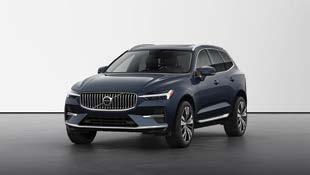


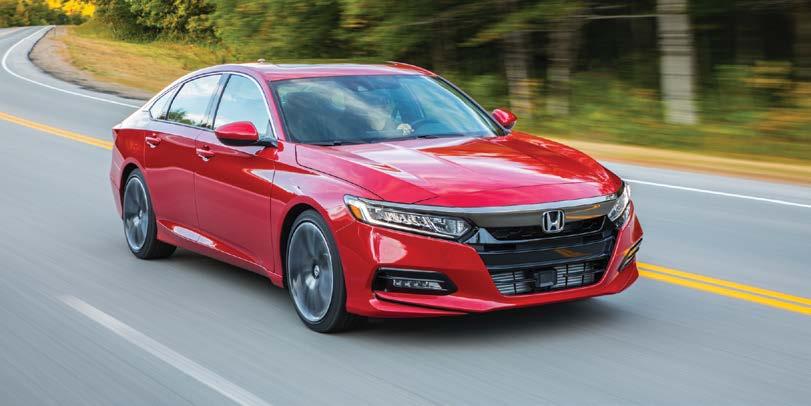
The Collision Industry Foundation (CIF) is delighted Crash Champions joined the CIF Annual Donor Program at the Urgent Care (second highest) tier.
Introduced in 2021, the Annual Donor Program was designed to bring needed recurring resources to the foundation, so it can deliver on its mission to “Answer the Call” when those in the industry have been impacted by catastrophic events such as wildfires, hurricanes and flooding. Learn more about the tax-deductible donations for the program at www. collisionindustryfoundation.org/ uploads/1/2/0/0/120099486/ cif_ad_order_form2023-0313.pdf
For more than two decades through the generous support of corporations and individuals, CIF has been able to assist hundreds of collision repair professionals in need after disaster.
CIF is grateful for Crash Champions’ first time support of the Annual Donor Program.
Source: CIF
in front. This is not because the rear seat has become less safe. Rather, the front seat has become safer because of improved airbags and advanced seat belts that are
focus on the injuries most frequently seen in back-seat passengers.
rarely available in back. Even with these developments, the back seat remains the safest place for young children, who can be injured by an inflating front airbag.
To encourage manufacturers to improve rear-seat protection, the updated test adds a dummy in the back seat behind the driver. The driver dummy is the size of an average adult man. The rear dummy is the size of a small woman or 12-year-old child. IIHS researchers also developed new metrics that
For a vehicle to earn a good rating, there can’t be an excessive risk of injury to the head, neck, chest or thigh, as recorded by the secondrow dummy. The dummy should remain correctly positioned during the crash without sliding forward beneath the lap belt, or “submarining”. The head should also remain a safe distance from the front seatback and the rest of the vehicle interior. A pressure sensor on the rear dummy’s torso is used to check whether the shoulder belt is too high, which can make the restraint system less effective.
As in the original test, the structure of the occupant compartment must maintain adequate survival space for the driver, and measurements taken from the driver dummy shouldn’t show an excessive risk of injuries.
All five small pickups provided good protection in the front seat. However, measurements indicated a slightly higher risk of leg or foot injuries to the driver in the Gladiator and Tacoma.
In the Colorado, Frontier, Ranger and Tacoma, the restraints in the back seat allowed the rear dummy’s head to come too close to the front seatback. That was not an issue for the Gladiator. However, its rear restraints do not include a side curtain airbag, increasing the risk of injury from a hard impact with the interior of the vehicle or even something outside it.
In the Ranger, the rear dummy submarined beneath the lap belt, causing it to ride up from the ideal position on the pelvis onto the abdomen, which increases the risk of internal injuries.
Otherwise, injury measures taken from the rear dummy indicated a moderate or likely risk of both neck and chest injuries in the poor-rated Colorado, Gladiator and Tacoma and a moderate risk of chest injuries in the marginal-rated Ranger.
 Source: IIHS
Source: IIHS

General Motors Co. announced June 30 it acquired substantially all the assets of Israel-based battery software startup ALGOLiON Ltd. for an undisclosed sum.
The acquisition was led by the newly formed Technology Acceleration and Commercialization (TAC) organization, a group within GM.
ALGOLiON, which received early support from the Israeli Innovation Authority, was founded in 2014. The company has developed sophisticated software that uses data streams from EV battery management systems to help identify anomalies in cell performance to ensure proper vehicle health management and provide early detection of battery hazards including thermal runaway propagation events.
ALGOLiON’s software, coupled with GM’s internal capabilities and vast experience in delivering best-inclass products at scale, can greatly accelerate time-to-market of a costeffective early hazard detection system for the benefit of millions of GM’s customers worldwide.
Source: GM
The cost of new car repairs has been steadily rising over the years. Increased complexity, new components and a trend towards non-repairable energy-dissipating elements mean if you’re in a collision in a new car, you’re likely going to have to pay more than ever to get it back to showroom condition.
Predictably, the rise in average repair costs—an increase of 36% since 2018—is having a knock-on effect on insurance premiums. According to Mitchell, a company that tabulates data from insurance and auto repair, insurance rates are up by 17% in the last 12 months through May.
“The modern digital architecture is so advanced that systems beyond point of impact are being disrupted,” said Ryan Mandell, director of claims performance for Mitchell, speaking to The New York Times. “Getting a car back to pre-loss condition is harder than at any point in history and will only become more challenging.”
But despite various incidents
highlighting the sometimes excessive repair quotes for EVs, such as when a rear-ended Rivian R1T was given a $42,000 repair estimate, the data could tell a different story. In fact, while the average repair costs of an EV following an accident are indeed higher, they’re not markedly so over their ICE counterparts.
while premium segment vehicles are roughly equal in their repair costs.

There are other factors at play too. According to the data, 18% of combustion vehicles involved in crashes have to be written off, while only 6% of EVs are totaled. Meanwhile, according to evidence from the Highway Loss Data Institute, for models that are available in both electric and ICE variants, such as the Hyundai Kona and the Volvo XC40, the EVs are just 2% more expensive to fix.

At first glance, Mitchell’s results show EVs cost $2,400 more, on average, to fix than combustion vehicles after an accident. However, 75% of electric cars involved in accidents are classed as luxury models, which cost between $40,000 and $110,000 new. Fixing a more mainstream EV—such as those from Nissan—costs only $800 more than its ICE equivalent,
Although a damaged battery pack is still going to jack up repair costs, automakers are working on ways to minimize the financial burden of such replacement. BMW‘s EVs allow for the modular replacement of battery elements identified thanks to crash sensors. GM is developing a similar method to allow dealerships to replace individual battery modules, and the Ford Mustang Mach-E can swap overall components into a new battery tray.


The percentage of shops getting paid for the labor involved in inspecting seat belts and their associated components has more than tripled since the question about it first began to appear annually in the “Who Pays for What?” survey series in 2016.

This not-included repair operation—for which every OEM has a very specific procedure— is a necessary and required part of a safe collision repair, said Mike Anderson of Collision Advice, adding he will not be satisfied until 100% of shops are performing it.
“I know I have been saying this for years, but of the 100-plus not-include’ repair procedures we cover in the surveys each year, this is the one that keeps me awake at night,” said Anderson, who conducts the “Who Pays” surveys with CRASH Network. “Anything less than 100% on this question is very concerning because it indicates to me that too few
shops are researching OEM repair procedures and are thus not aware of this requirement.”


The industry does appear to be headed in the right direction on the procedure. In 2016, 63% of shops acknowledged they had never included it on a final invoice—that’s fallen to about 33% today—and of those who had in 2016, more than half (56%) said insurers would never pay for it. Today, one-third still believe insurers won’t pay them for the procedure, even while 44% of the shops that do charge for it say they get paid all or most of the time by the eight largest national insurers, and another 27% are paid at least sometimes.
“I am glad to see the big improvement, but more is needed,” Anderson said. “As an industry, we must accept responsibility for researching and following the requirements for this on every single vehicle we repair.”
The latest quarterly “Who
Pays for What?” survey is now open through the month of July. It focuses on notincluded frame and mechanical labor operations. Shops can take the survey at https:// www.surveymonkey.com/ r/8CRPC28
Survey participants receive a free report with complete survey findings along with analysis and resources to help shops better understand and use the information presented.
The survey can be completed in less than 15 minutes by anyone familiar with their shop’s billing practices and the payment practices of at least some of the largest national insurers. Each shop’s individual responses are held in the strictest confidence; only aggregated data is released.
The results of previous surveys are also available online at https://www.crashnetwork. com/collisionadvice.
Source: CRASH Network

The Nissan Foundation is awarding $1.2 million to 39 nonprofits that share and celebrate diverse cultural perspectives, experiences and voices to communities across the country—the first time it is awarding more than $1 million during its annual grant cycle.
The grant recipients are based in communities surrounding Nissan facilities in Southern California, Middle Tennessee, Central Mississippi, Dallas/Ft. Worth, Southeast Michigan, New York City and Atlanta.
Fresh off its 30th anniversary, the Nissan Foundation has awarded nearly $16 million to approximately 150 nonprofits since its founding in 1992. The Nissan Foundation was created as a direct response to the civil unrest that followed the Rodney King trial verdict. At that time, Nissan’s then U.S. sales headquarters was based just blocks from the riot’s epicenter.
The 2023 grantees include museums, public television stations, libraries and other nonprofits.
Source: Nissan Foundation
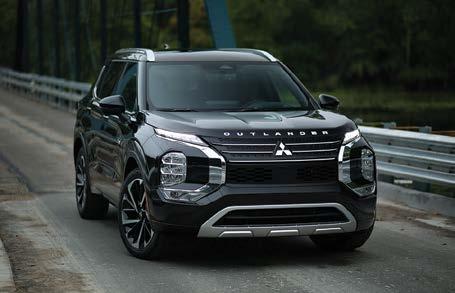
ARIZONA
Horne Kia
Gilbert
877-450-9001

(480) 813-3383 Fax
M-F 7am - 6pm
hkparts@hornekia.com www.hornekia.com

ARKANSAS
Crain Kia

Sherwood
501-542-5230
(501) 542-6133 Fax
M-F 7:30am - 6pm
timhill@crainteam.net www.crainkia.com
All Star Kia of Baton Rouge
Baton Rouge
5740 Siegen Lane
225-490-8000
(225) 490-8014 Fax
Ferguson Advantage Imports Broken Arrow
800-880-8815
(918) 317-6280 Fax
M-F 7am - 6pm
Ancira Kia
San Antonio
210-509-2197
(210) 509-2198 Fax
M-F 8am-6pm Sat 8am-3pm
tstewart@ancira.com www.ancirasa.com
Archer Kia Houston
1-888-983-1425
(281) 983-1437 Fax
M-F 7am-6pm Sat 9am-2pm www.archerkia.com
Bob Utter Kia Sherman
903-892-5967
(903) 891-7304 Fax
M-F 7:30am - 6pm Sat 7:30am - 1pm
Mike.martin@bobutterford.com www.bobutterford.com

De Montrond Kia Houston
281-877-3060
281-872-3909
(281) 872-3914 Fax
M-F 7:30am-6pm Sat 7:30am-3pm www.demontrondkia.com
Fredy Kia
Houston
800-883-1933
(713) 947-8053 Fax
M-Sat 8am-6pm parts@fredykia.com
Huffines Kia McKinney
McKinney
469-525-4354
M-F 7am-7pm
brian.chadduck@huffines.net
brydan.reid@huffines.net
UTAH
Findlay Kia


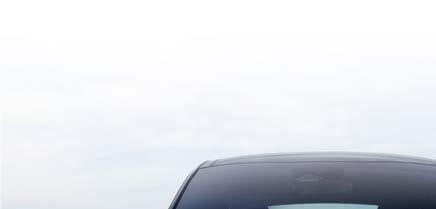
St. George
435-817-4245
(435) 634-1229 Fax
M-F 8am - 6pm Sat 8am - Noon

Once considered an EV startup, automaker Tesla has progressed far beyond that status now, recently landing the top four spots in Cars. com’s 2023 American-Made Index ranking.
According to the index, the top 10 most American-made cars are:
U.S. manufacturing workforce and location of final assembly,” Cars.com said. “Though the other factors are accounted for in scoring, without people on the ground in plants to build them, a car’s not making the list no matter the rest of its credentials.”
and ultimately lifted the Model X and Model S, lagging of yesteryear, to complete the sweep,” Cars.com said.


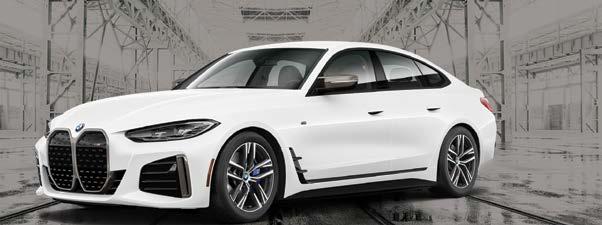
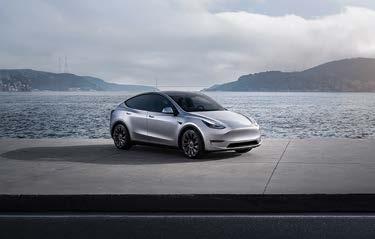
With Tesla capturing the top four spots, there’s no doubt it’s the most American-made automaker out there. Volkswagen grabbing the sixth spot with the ID.4 is a bit of a surprise. Initial production of the ID.4 for U.S. consumption was based in Germany. However, VW started producing the U.S. ID.4 in Tennessee, enough to place it sixth on the list.

Labeling Act and therefore won’t make the rankings.
Lucid presumably didn’t make the cut due to its small workforce here in the U.S. However, the Chevy Bolt and Bolt EUV also didn’t make the cut. Looking at the criteria, it seems both were disqualified due to the fact they are being discontinued.
A few more EVs made the top 100 American-Made list: the Ford F-150 Lightning came in 38th, the Mercedes-Benz EQS SUV is 92nd and the Nissan Leaf is 93rd.
Cars.com explained the criteria for making the list and it’s a bit more complex than you might think:
“The AMI’s criteria for judgment include percentage of domestic parts content and country of origin both for engines and transmissions, but arguably its most important are
Tesla got further boosted in this year’s rankings due to Giga Austin coming online and producing vehicles in volume.
“A substantial year-over-year boost in employment at its plant in Austin, TX—where the No. 1-ranked Model Y is produced—aided all Teslas in our workforce calculations
If you’re wondering why Rivian didn’t make the cut—in fact, it’s not even on the list of the top 100—that’s because the weight of the R1T and R1S put both outside of the light-duty vehicle category. Likewise for the GMC Hummer EV pickup truck and SUV. The upcoming Tesla Cybertruck will probably exceed the 8,500-pound weight limit too, which means it doesn’t have to comply with the American Automobile
Looking at automakers as a whole, the top three for share of U.S. light-duty sales from domestic assembly for the 2023 Model Year are Tesla Inc. with 100%, Ford Motor Co. with 77.5% and Honda Motor Co. Ltd. with 73.1%. Tesla again leads by a wide margin and will likely retain that 100% figure for the foreseeable future.
Universal TPMS Kit
Ranger Division of BendPak, a leader in wheel service equipment, introduced its TruSensor universal TPMS solution for diagnosing and programming tire pressure monitoring systems on import and domestic cars, SUVS, vans and trucks.
Offering 98% global vehicle coverage, the new TS58R kit includes a portable diagnostic and programming tool, metal stem sensors, snap-in rubber sensors, USB interface cable, OBDII cable and power cord, all packaged in a durable, padded carrying case.
The Ranger TruSensor TS58R tool can test tire pressure, temperature and battery life. It can read and clear TPMS diagnostic trouble codes, reset warning lights and accurately diagnose car key remotes and fobs. Technicians can control all operations through the 4.3-inch color touchscreen or by using soft-touch buttons.
Learn more at bendpak.com/ trusensor or call 805-933-9970.
The cost of financing a new vehicle remains at an all-time high as car shoppers search for a new ride this summer, according to the car shopping experts at Edmunds.

New vehicle transaction data from Edmunds revealed the recordbreaking financing figures from Q1 were unyielding in the second quarter: The share of consumers who financed a vehicle with a monthly payment of $1,000 or more reached a new all-time peak of 17.1% in Q2, up from 16.8% in Q1 2023 and 4.3% in Q2 of 2019.
Average monthly payments also reached a new record high of $733 in Q2, up from $730 in Q1 and $678 in Q2 2022. The average annual percentage rate (APR) ticked up a tenth of a percentage point to 7.1% in Q2, compared to 7.0% in Q1 and 5.0% in Q2 2022. 7.1% is the highest APR since Q4 2007. The average amount financed remained above $40,000 for the fifth straight quarter, settling at $40,356 in Q2, slightly below Q1 2023’s mark of $40,468 and $40,602 in Q2 2022.
“The double whammy of relentlessly high vehicle pricing and daunting borrowing costs is
presenting significant challenges for shoppers in today’s car market,” said Ivan Drury, Edmunds’ director of insights. “The Federal Reserve’s recent pause in interest rate hikes unfortunately didn’t offer much relief for consumers, and hints at further raises later this year mean auto loan rates could even continue to increase.”
Edmunds analysts conducted a deeper dive into the makeup of $1,000+ new-vehicle monthly payments and discovered not all four-figure auto loans look the same. Of the consumers who agreed to a $1,000+ monthly payment in Q2, there are two distinct subgroups:
64.5% signed up for an average loan-term range of between 67 and 84 months and an average APR of between 8.5% and 9.6%. Edmunds analysts say this group is made up of consumers who are paying thousands of dollars toward interest vs. principle and could find themselves upside down on their auto loans down the road.
15.6% signed up for loan term lengths between 31 and 48 months and a 2% to 4.8% APR. Edmunds analysts note this latter group is

Subaru Superstore of Chandler
PHX Metro East
(877) 443-3239
(480) 268-2402 Local
Mon.-Fri. 7-6; Sat. 7-5
WholesaleEast@ShopSubaru.com
Subaru Superstore of Surprise
PHX Metro West
(844) 378-9875
(623) 232-7202 Local
(623) 232-7303 Fax
Mon.-Fri. 7-6; Sat. 7-5
WholesaleWest@ShopSubaru.com
Flatirons Subaru Boulder

(303) 443-2919
(303) 442-1342 Fax
Mon.-Fri. 7:30-6; Sat. 8-5 parts@flatironsimports.com
likely made up of savvy consumers who are taking advantage of subsidized finance offers, which typically consist of lower-rate but shorter-term loans. On a typical $40,000 loan, consumers with a 2.9% APR over 36 months can expect to save $8,500 in finance charges compared to those with a 7.9% APR over 72 months.
“There are better ways and worse ways to spend $1,000 per month on a car note,” said Drury. “Consumers who are paying large amounts of finance charges could be in jeopardy of falling into a negative equity trap, so it’s critical to come to the table with a comprehensive budget and a feel for the financing elements of a car purchase beyond the monthly payment, including the APR.
“For those with plans to replace their vehicle over the next few months, you may have to reset any expectations of the summer discounts of old. But, on a positive note, trade-in values remain elevated compared to prepandemic times, so shop around to ensure you get top dollar for the asset you own.”
Source: EdmundsBaldwin Subaru Covington
(888) 310-9605
(985) 338-2598
(985) 273-3273 Fax
Mon.-Fri. 7:30-6; Sat. 8-3 lrose@baldwinmotors.com
Five Star Subaru Grapevine
(877) 308-9055
Direct (817) 438-1732
parts@subarugrapevine.com
www.subarugrapevine.net
Huffines Subaru Corinth
(888) 928-2978
(940) 321-2679
(940) 497-2920 Fax
Mon.-Fri. 7-7; Sat. 8-5 les.hickman@huffines.net
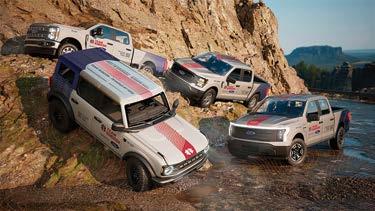
Ford Motor Company, the Ford Fund and Team Rubicon on June 20 announced Team Rubicon Powered by Ford, a new disaster relief initiative that will serve the growing number of communities across the U.S. impacted by hurricanes, tornadoes, earthquakes and wildfires.
According to studies, 90% of U.S. counties experienced a federal climate disaster between 20112021. Ford’s investment—which includes a fleet of vehicles, a $2.5 million philanthropic donation, and a commitment to deploying employee volunteers—greatly expands Team Rubicon’s ability to provide no-cost services to vulnerable communities in the wake of these disasters and crises.
“At the heart of Ford is our commitment to help out our communities in times of need and make it possible for our employees to volunteer their time and talent to help others,” said Bill Ford, executive chair of Ford Motor Company. “The reality is weather-related disasters in the U.S. are becoming more frequent and more severe. That is
why we are significantly expanding our relationship with Team Rubicon, donating a fleet of vehicles and deploying volunteers where they are needed most.”
Hurricane Harvey in 2017 to the Texas ice storms in 2021 to deadly storms in eastern Kentucky in 2022, Ford has shown up for communities in need by deploying vehicles to provide emergency transportation and power, delivering essential goods and funding direct service providers.
with first responders, medical professionals and technology solutions, Team Rubicon aims to provide the greatest service and impact possible.
Team Rubicon Powered by Ford builds on nearly 25 years of disaster relief efforts by Ford. The company has invested in disaster relief efforts since 1999, when a catastrophic earthquake struck Turkey, and Ford mobilized vehicles, volunteers and other lifesaving aid in the region.
Since then, Ford has consistently supported disaster relief efforts in communities across the country and around the world. From

Over the last few years, the Ford Fund has donated $7 million to disaster relief efforts globally, including $1.5 million in previous investments to Team Rubicon.
Team Rubicon is a veteranled humanitarian organization that serves global communities before, during and after disasters and crises. Founded following the Haiti earthquake in 2010, the organization has grown to more than 160,000 volunteers across the U.S. and has launched more than 1,100 operations domestically and internationally. By pairing the skills and experiences of military veterans
“It starts with shared values— Team Rubicon and Ford both embrace the ethos of service, a vision of creating and strengthening communities—we’re committed to service,” said Art delaCruz, Team Rubicon CEO and retired U.S. Naval officer. “This Ford fleet and its innovative technology, in addition to the Ford Fund investment, exponentially increases our ability to reach those who have been impacted by disasters and crises. We are thankful for the longtime support and generous investment from the Ford Motor Company and the Ford Fund, and look forward to showcasing the possibilities that can happen when purposedriven companies team up with humanitarian organizations.”
Source: Ford Motor Company


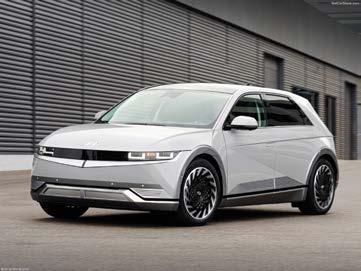
Arizona
Courtesy Chevrolet PHOENIX
602-248-7710
601-604-3025 Fax
M-F 7 am - 6 pm Sat 8 am - 3 pm
Parts@CourtesyAuto.com
Colorado
Emich Chevrolet LAKEWOOD
800-274-1127
303-986-2245
303-989-3490 Fax
M-F 7am - 6pm; Sat 8am - 4pm gmcollision@emichauto.com www.emichchevrolet.com
John Elway Chevrolet ENGLEWOOD
800-525-5096
303-761-5161
303-789-6737 Fax
M-F 7am - 6pm; Sat 8am - 4pm wholesaleparts@elwaydealers.net
Garcia Cadillac GM Parts ALBUQUERQUE
800-432-6944
505-884-9054
505-889-2950 Fax
M-F 7:30am - 5:30pm Sat 9am - 2pm parts288126@garciacars.com
Quality Buick GMC ALBUQUERQUE
505-348-1234
505-247-7490 Fax
M-F 7am - 5:30pm Parts@qualitydeal.com
Oklahoma
Bob Howard Parts OKLAHOMA CTY
800-888-3827
800-946-7278 Fax
M-F 8am - 5:30pm
sales@bhpdc.com www.bhpdc.com
Marc Miller Buick GMC TULSA
800-456-4700
918-828-7070 Parts Direct
918-828-7094 24 Hr. Fax
M-F 8am - 5:30pm
jerad@marcmillertulsa.com
www.marcmillerbuickgmc.com

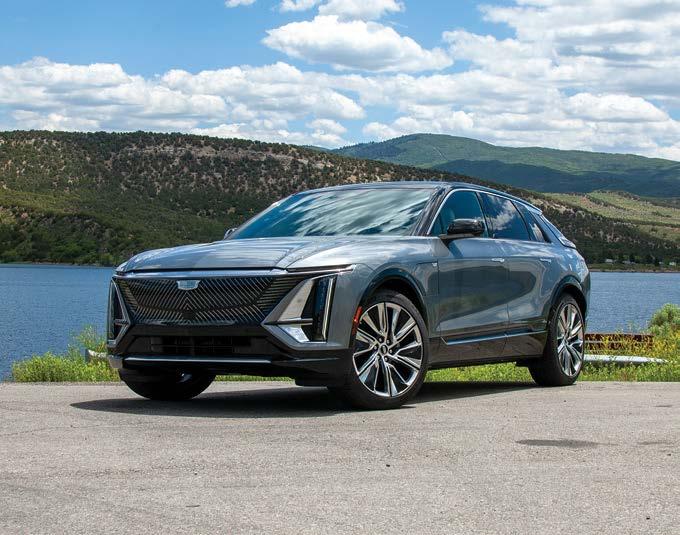
Texas
Atzenhoffer Chevrolet VICTORIA
800-627-3501
361-575-0171
361-578-8082 Fax
M-F 7:30am - 6pm rick@atzenhoffer.com
Lawrence Hall Chevrolet Buick GMC Cadillac ABILENE
325-692-3590
325-698-7310 Fax
M-F 7:30am - 6pm dgarner@lawrencehall.com
Northside Chevrolet SAN ANTONIO
833-691-1440
210-308-8683 Fax
M-F 8am - 6pm Sat 7am - 4pm emartin@mynschevy.com www.mynschevy.com
Utah
Ken Garff Buick GMC RIVERDALE
800-821-8797
801-627-6762
800-390-1317 Fax
M-F 8am - 6pm
Drivers desiring faster commutes might view a higher speed limit as a boon, but is it always the safest choice? And what about the safety needs of pedestrians, cyclists, and others?
A new study by the AAA Foundation for Traffic Safety found raising posted speed limits may do little to save time and increase traffic flow but could lead to more crashes, injuries and deaths.
The AAA Foundation’s research results varied across all 12 roadway sites examined. All had new posted speed limits—six raised and six lowered—and included various road types. Raising posted speed limits was associated with increased crashes on two interstate highways. At the same time, the study also found that lowering posted speed limits led to fewer crashes in many cases examined. But the likelihood of speed limit violations increased after lowering posted speed limits, suggesting the need for better public awareness education tied to these changes.
AAA urges transportation officials to apply a “holistic” approach when setting or changing posted speed limits and prioritize safety over speed and capacity.

“Our study analyzed before and




According to the National Highway Traffic Safety Administration (NHTSA), there were more than 42,000 traffic deaths in 2021 and again in 2022, the highest levels in 16 years. NHTSA reported speeding was a factor in nearly 29% of the fatalities in 2021 and 27% in 2022.




The foundation study found:
must be carefully implemented to maintain community support, prioritize equity and consistently drive improved safety.

after data on a dozen roadways that raised or lowered posted speed limits and found no one-size-fitsall answer regarding the impact of these changes,” said Dr. David Yang, president and executive director of the AAA Foundation. “However, it is critical to consider the safety implications when local transportation authorities contemplate making changes with posted speed limits.”
Speeding is a critical factor in vehicle crashes across the nation.



Raising posted speed limits was associated with increased crash frequencies and rates for two of the three interstate highways examined. Lowering posted speed limits was associated with decreased crash frequencies and rates for one of the two principal arterials examined.


Changes in travel times were small in response to both raised and lowered speed limits.
AAA recommends changes in posted speed limits should consider a range of factors, including but not limited to the type of road, surrounding land use and historical crash data. AAA supports automated speed enforcement, but programs

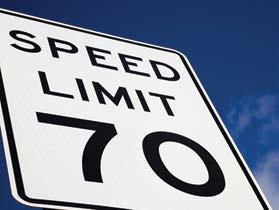
“The movement in statehouses to raise speed limits is happening across the country in at least eight states this year,” said Jennifer Ryan, director of state relations for AAA. “But the benefits are overrated, and the risks are understated. Increasing speed limits does not always yield the positive results envisioned by traffic planners.”
This study is the third phase of the AAA Foundation research examining the effect of posted speed limit changes on safety. In the foundation’s first study, traffic engineers were asked how posted speed limits are set and what factors they consider in changing them. In the second phase, crash testing revealed that small speed increases have severe and potentially deadly effects on crash outcomes.
Source: AAA
A 2003 Dodge Ram 1500 owner who was riding in the front passenger seat of the truck was killed May 13 when the Takata airbag inflator exploded in a crash.
Fiat Chrysler (FCA) has issued a “DO NOT DRIVE” warning for 2003 Dodge Ram 1500 trucks that have not had their Takata airbags replaced.
The National Highway Traffic Safety Administration confirmed the fatality was caused by a ruptured passenger-side Takata airbag inflator, and it involved one of 385,686 trucks recalled in 2015.
Like several automakers involved with Takata airbag recalls over many years, Chrysler said owners continue to ignore the importance of the Takata recalls.
“Six recall notices were sent to this customer’s home address. All went unheeded,” FCA said.
At least 26 people have been killed in the U.S. by exploding Takata airbag inflators in various models from several automakers, but it’s the first fatality in a Ram truck.
“The company extends its deepest sympathies to the family and friends of the customer whose life was lost in the May tragedy. It is the fourth such incident known to involve an FCA-brand vehicle,” Chrysler said.
of dying or being seriously injured because of a defective, recalled Takata airbag. These repairs are absolutely free and could save your life.”
NHTSA is correct, and there is no reason any of these trucks should not have been repaired long ago.
Automakers involved in the Takata airbag disaster have taken extreme measures to convince vehicle owners to keep occupants safe by having their vehicles repaired. In some cases, manufacturers have sent teams of representatives to the homes of owners across the country in an attempt to convince customers to have the airbag inflators replaced.
free repairs.
The owner loaned the Chrysler 300 to a family member who was killed when the driver’s airbag exploded.
The “do not drive” warning for 2003 Dodge Ram trucks joins stopdriving warnings for 2005-2010 Dodge Magnum, Dodge Challenger, Dodge Charger and Chrysler 300 vehicles with unrepaired recalled Takata airbags.

According to FCA, it will provide free alternative transportation to assist customers with getting to and from dealerships.
Audi
NHTSA said if a recalled Ram truck has not been repaired, occupants are “at grave risk of serious injury or death.”
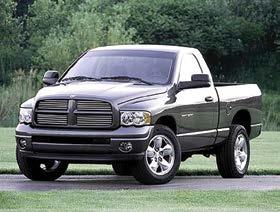
“The older a defective Takata air bag inflator gets, the more dangerous it becomes,” said NHTSA Acting Administrator Ann Carlson “Please, get your airbag replaced now for your sake, and for the sake of those who love you. Don’t put yourself or someone you love at risk
In 2022, it was confirmed a Chrysler 300 driver was killed by a Takata airbag even though the owner asked FCA about the airbag recall in 2018. However, the Chrysler owner declined to have the airbag inflator replaced and the automaker continued to send warnings about the airbags.
According to FCA, the company tried “114 outreach attempts” during a period of seven years but the vehicle was never brought in for
ARIZONA
Audi Arrowhead
Peoria
877.358.8165
623.561.4750
623.561.4703 Fax
M-F 7am-6pm Sat 7am-5pm mendozaa4@autonation.com
Audi Gilbert Gilbert 877.412.2925
480.855.8101
480.346.9201 Fax
M-F 7am-6pm Sat 7am-1pm audiparts@audigilbert.com www.audigilbert.com
Audi Dallas Dallas 866.327.2318
214.438.0894 Fax
M-F 7am-7pm Sat 9am-5pm
larry.elliott@audidallas.com www.audidallas.com
If you own one of these recalled vehicles or believe you know someone who does, call the Fiat Chrysler Takata call center at 833585-0144 or visit www.mopar.com/ en-us/my-vehicle/recalls/takatarecalls.html
Audi Fort Worth
Dallas/Fort Worth
817.632.6709
817.632.6747 Fax
M-F 7:30am-6pm Sat 8am-3pm sstallcup@audifortworth.com oreyna@audifortworth.com www.audifortworth.com
Audi Grapevine
Dallas/Fort Worth
877.424.AUDI (2834) 817.553.2252/2258
M-F 7am-6pm Sat 8am-5pm sstallcup@audigrapevine.com
cmartinez@audigrapevine.com www.audigrapevine.com
Audi Plano

Dallas/Fort Worth
214.452.3830
214.452.3855 Fax
M-F 7am-7pm Sat 8am-5pm
gualotunao@autonation.com www.audiplano.com
Publisher Jeremy Hayhurst
General Manager
Barbara Davies
Editor
Abby Andrews
Contributing Writers
Mike Anderson, Ed Attanasio, Stacey Phillips, Cole Strandberg, John Yoswick
Advertising Sales
Joe Momber, Norman Morano
Office Manager
Kelly Cashman
Digital Marketing Manager

Bryan Malinski
Art Director
Rodolfo Garcia
Senior Designer
Vicki Sitarz
Accounting & HR Manager Heather Priddy
Permissions Editor
Randi Scholtes
Serving Texas, Oklahoma, Louisiana, New Mexico, Arkansas, Colorado, Arizona, Utah and adjacent metro areas. Autobody News is a monthly publication for the autobody industry. Permission to reproduce in any form the material published in Autobody News must be obtained in writing from the publisher.

©2023 Adamantine Media LLC.
Autobody News P.O. Box 1516 Carlsbad, CA 92018 (800) 699-8251 (760) 603-3229 Fax www.autobodynews.com editor@autobodynews.com


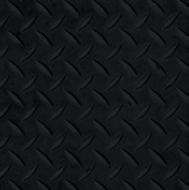
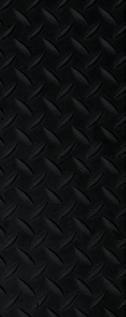
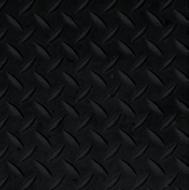

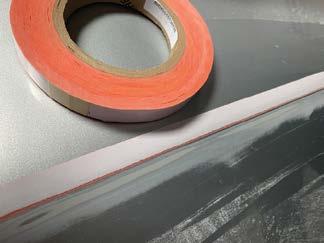
The National Highway Traffic Safety Administration (NHTSA) has asked Tesla for updated data related to an ongoing investigation into 830,000 Tesla vehicles and the automaker’s Autopilot driver-assist system.
The NHTSA is investigating Tesla’s driver-assist system after it identified more than a dozen crashes involving the feature and emergency vehicles. The agency is also investigating whether Autopilot adequately ensures drivers are paying attention while it is operating.
The safety agency sent a letter to Tesla on July 3, requesting updates to inquiries it had made in 2022. A copy of the letter made public by the agency indicated it is demanding answers by July 19, Reuters reported.
The new letter also seeks data on the number of vehicles equipped with “Tesla Vision,” which solely relies on cameras
instead of radar. The agency had previously inquired about Tesla’s cabin camera, used to check driver attentiveness while Autopilot or FSD is engaged.
Tesla has not shared a comment about the matter as of writing.
Tesla’s Autopilot (AP) allows vehicles to automatically steer, accelerate and brake within their designated lane, while Enhanced Autopilot (EAP) provides Teslas with the capability to perform lane changes on highways. Tesla’s Full Self-Driving (FSD) Beta allows vehicles to navigate inner-city streets. Despite these capabilities, Autopilot, Enhanced Autopilot and FSD Beta do not make vehicles fully autonomous.
In 2022, the NHTSA said nine out of 11 vehicles in prior crashes exhibited no driver engagement, visual alerts or audible alerts until just moments before a collision occurred. Four vehicles did not receive any visual or audible alerts at all during Autopilot’s final use cycle.

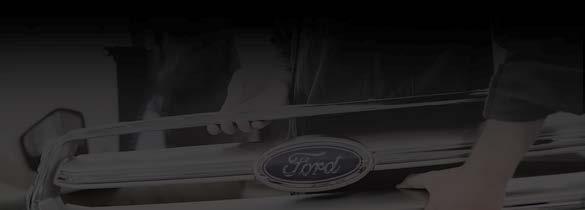

The only parts that perform as great as they look. Give your customers the power to drive a vehicle you’re both proud of. These trusted Ford dealers below have the OEM parts you need. Place your order today.

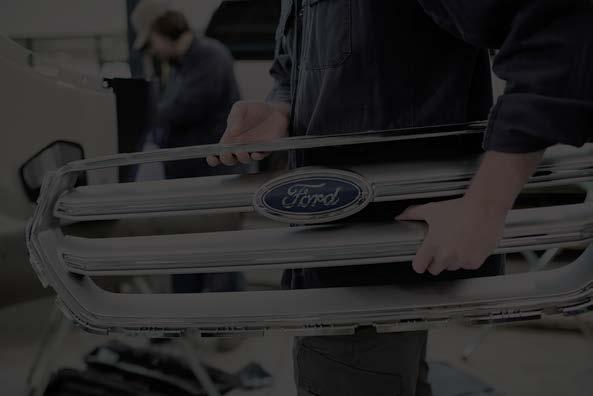

Earnhardt

CHANDLER
480-763-6233
480-783-4655 Fax www.earnhardtford.com
MESA
480-530-9720
480-530-9708 Fax
Hours: M-F 7-7; Sat 7-4 butch.lemen@lhmauto.com
Lakewood LAKEWOOD
800-332-3722
720-481-2460
303-991-4134 Fax
Hours: M-F 7-8; Sat 8-4 steven.albertson@lhmauto.com
Schomp Ford DENVER
800-876-0977
303-343-1396
303-361-9278 Fax
Hours: M-F 7:30-5:30; Sat 7:30-3 fordparts@schomp.com

Bob Howard Parts OKLAHOMA CITY
800-888-3827
800-946-7278 Fax
Hours: M-F 8am - 5:30pm sales@bhpdc.com www.bhpdc.com
TULSA
WHOLESALE DIRECT
800-800-9001
800-676-8509 Fax adodson@penskeautomotive.com www.fordparts.com/unitedford www.unitedford.com
Five Star Ford
NORTH RICHLAND HILLS WHOLESALE DIRECT
800-895-7827
817-577-2781
817-577-0558 Fax www.5starford.com
Helfman Ford STAFFORD
281-240-7628
800-634-8008
281-240-0642 Fax parts@helfmanford.com www.fordparts.com/helfman
Mac Haik Ford, Lincoln
GEORGETOWN/AUSTIN
877-969-3055
512-930-6260
281-598-4370 Fax parts@machaikfl.com
Tommie Vaughn Motors
HOUSTON
800-944-4415
713-869-4755
713-293-4309 Fax www.tommievaughnford.com
Town East Ford
MESQUITE
972-798-4529
972-682-1290 24 Hr Fax
Hours: M-Sat 7-5
jhalcomb@vtaig.com www.towneastford.com

